By David Malmo-Levine from Cannabis Culture June 9 2022
CANNABIS CULTURE – White Supremacist pot cartel & BC Provincial Government seeks to raid Indigenous pot dispensaries out of existence
“Boundary n. In political geography, an imaginary line between two nations, separating the imaginary rights of one from the imaginary rights of the other.”
– Ambrose Bierce, The Devil’s Dictionary, 1911 (1)
“There is no choice left but to defend life against the genocidal machine. … Do not be deceived. It is a classic stratagem of genocide to camouflage their wars as law-and-order police actions.”
– Timothy Leary, Confessions of a Hope Fiend, 1973 (2)
“Institutional racism also exists when policies or programs seem racially neutral, but either intentionally or unintentionally put minority group members at a disadvantage. As an example, in certain provinces the process for selecting citizens for jury duty results in Indigenous people rarely being selected. . . . Until 1960, Indigenous adults could not vote in federal elections unless they first renounced their Indian Act status and gave up treaty rights.”
– “Racism,” The Canadian Encyclopedia (3)
“Indigenous peoples have the right to their traditional medicines and to maintain their health practices . . .”
– Article 24:1 – United Nations Declaration on the Rights of Indigenous Peoples, 2007 (4)
Indigenous cannabis dispensaries within Canada are under attack! Not only by the government and the police, who continue to raid Indigenous owned shops over and over again, but also by some very greasy cannabis retail shop owners who are suing the BC government for not raiding Indigenous dispensaries enough! This attack is even more sickening when you look closely at how some of these (very white) retail owners have co-opted Indigenous art and culture for their store names, their decor and their logos. This article reviews the civil suit launched by the Okanagan Cannabis Collective, explores how Indigenous people have (mostly) been left out of the legal market, and then looks closely at Indigenous claims to the right to sell cannabis under the UNDRIP treaty. But first we begin with some context – the ongoing genocide of Indigenous people in Canada. My hope is that the reader will understand that white people do have a place in Canada’s future – but white supremacy must end now.
The relationship between the Indigenous people living in the land some call Canada and the European colonialists who settled there has mostly been one of genocide, perpetrated upon the former by the latter – in spite of promises made by the latter.
Image #1: en.wikipedia.org/wiki/Royal_Proclamation_of_1763#/
The Royal Proclamation of 1763 was a promise made by King George III to honor aboriginal rights and title, including the right to self-determination. The Proclamation says, among other things:
“And whereas it is just and reasonable, and essential to our Interest, and the Security of our Colonies, that the several Nations or Tribes of Indians with whom We are connected, and who live under our Protection, should not be molested or disturbed in the Possession of such Parts of Our Dominions and Territories as, not having been ceded to or purchased by Us, are reserved to them, or any of them, as their Hunting Grounds . . .” (5)
Image #2: “Captain Bulger, Governor of Assiniboia, and the Chiefs and Warriors of the Chippewa Tribe of Red Lake, in Council in the Colony House in Fort Douglas, May 22nd, 1823” from artsandculture.google.com
This promise to not molest or disturb the First Nations people has been completely ignored and forgotten by both the Crown and the people of Canada. Undeniably, it has never been honored in this country’s entire history.
Take, for example, the issue of land ownership. More than half of Canada’s land mass – including all or nearly all of BC, the Yukon, Nunavut, Quebec, Newfoundland and Labrador – is unceded Indigenous territory. No treaty. Just stolen land. (6) Much of the land covered by treaties was not ceded either – the settlers promised that it would be shared, as was recently pointed out by award-winning journalist Emma McIntosh in the National Observer:
“To be more precise: the Maritimes, nearly all of British Columbia and a large swath of eastern Ontario and Quebec, which includes Ottawa, sit on territories that were never signed away by the Indigenous people who inhabited them before Europeans settled in North America. In other words, this land was stolen. (It’s worth noting that territories covered by treaties also weren’t necessarily ceded — in many cases, the intent of the agreements was the sharing of territory, not the relinquishing of rights.)” (7)
Image #3: quora.com
Even the land retained by the First Nations people through treaties is a fraction of a fraction of what they once belonged to. Most of the land held by Indigenous communities is found in the Northern – and less valuable/harder to live in – provinces:
“Indeed, while representing 4.9% of the total population, Indigenous peoples hold around 626 000 km² or 6.3% of the total landmass of Canada. Most of it lies north of the 60th parallel, whilst in the southern provinces, which are home to approximately 95% of all Indigenous Peoples within Canada, only 37 000 km² are held by Indigenous groups, that is 0.5% of Canada’s land mass.” (8)
But this Canadian genocide isn’t just a matter stealing most of the land (and nearly all of the best land) – it also involves a lot of murder through biological warfare. While genocide doesn’t require killing to be perpetrated – it can also be limited to forced assimilation (9) – the ongoing Canadian genocide of First Nations communities involves plenty of both. Indigenous people were first subject to biological weapons by the British, beginning in the American Colonies in the 1760s (10) and then again in Canada in the 1860s. (11)
Image #4: An illustration of Ottawa Chief, Pontiac confronting Colonel Henry Bouquet who authorized his officers to spread smallpox amongst native Americans by deliberately infecting blankets after peace talks. Taken from http://pabook2.libraries.psu.edu/palitmap/BushyRun.html
The Canadian federal government banned the Indigenous economic system of redistribution – the potlatch – from 1884 to 1951, arguing that it was “anti-Christian, reckless and wasteful of personal property.” The last major potlatch in BC was held in 1921. By the time the ban was repealed, the damage had been done – Indigenous communities became more stratified and the concept of poverty was now entrenched. (12)
Image #5: “Watercolour by James Gilchrist Swan (1818–1900) of the Klallam people of chief Chetzemoka (nicknamed ‘the Duke of York’), with one of Chetzemoka’s wives (nicknamed ‘Jenny Lind’) distributing potlatch at Port Townsend, Washington, USA. . .” Taken from: https://www.wikidata.org/wiki/Q756880#/media/File:Klallam_people_at_Port_Townsend.jpg
The potlatch prohibition hurt women more than men, as men could go out “hunting” and maintain the ritual in secret – women had no such pretext. The banning of the potlatch not only removed a formal socialistic element from the economy, but also installed the patriarchy. (13)
Image #6: canadianart.ca/features/kent-monkman-critiques-canada-150/
Image #7: ecampusontario.pressbooks.pub/indigstudies/chapter/chapter-1/
Image #8: ecampusontario.pressbooks.pub/indigstudies/chapter/chapter-1/
The “Residential School System” involved around 150,000 Indigenous children that were stolen and subjected to forced assimilation into European-Canadian society. It was a nightmarish Catholic school experience, involving a living hell for the stolen children, including physical, emotional and sexual abuse, along with death from murder, torture (14) and neglect. The mortality rate from TB (plus neglect) reached 30 to 60 percent during certain time periods:
“In 1909, Bryce reported that, between 1894 and 1908, mortality rates at some residential schools in western Canada ranged from 30 to 60 per cent over five years (that is, five years after entry, 30 to 60 per cent of students had died, or 6 to 12 per cent per annum). These statistics did not become public until 1922, when Bryce, who was no longer working for the government, published The Story of a National Crime: Being a Record of the Health Conditions of the Indians of Canada from 1904 to 1921. In particular, he alleged that the high mortality rates could have been avoided if healthy children had not been exposed to children with tuberculosis.” (15)
Image #9: ecampusontario.pressbooks.pub/indigstudies/chapter/chapter-1/
Image #10: ecampusontario.pressbooks.pub/indigstudies/chapter/chapter-1/
Image #11 taken from https://mattersofthemoment.com/2015/06/02/cross-in-the-wilderness/
Father Allard quote from: “Where are the Children buried?” Dr. Scott Hamilton, https://ehprnh2mwo3.exactdn.com/wp-content/uploads/2021/05/AAA-Hamilton-cemetery-FInal.pdf
So many Indigenous children died from neglect/TB at one time, often they weren’t provided proper graves – mass graves were used instead. (16)
Neglect is a form of murder – second-degree murder. (17) In Canada, it’s 222 5 (b) of the Criminal Code, in the “culpable homicide” section:
“(5) A person commits culpable homicide when he causes the death of a human being, (b) by criminal negligence . . .” (18)
The last of Canada’s residential schools closed in 1997. In May of 2021, unmarked graves at residential schools began being officially acknowledged by investigators and began being reported on in the mass media. About 16 schools have been investigated so far, and thousands of suspected unmarked and/or mass graves have been found. (19) 
Image #12: https://www.bbc.com/news/magazine-33099511
Image #13: https://montrealgazette.com/news/local-news/grief-but-no-shock-in-kahnawake-after-discovery-of-b-c-residential-school-graves
There were 139 “official” residential schools in Canada – so at least another 123 need investigating. (20) So far, an average of about 131 bodies have been found at each school. Times that number by 139 schools and you have about 18227 bodies one could reasonably expect to find buried after all the schools have been searched. 
Image #14: https://globalnews.ca/news/8074453/indigenous-residential-schools-canada-graves-map/
Image #15: https://www.aljazeera.com/news/2022/3/1/canada-169-potential-graves-found-at-former-residential-school
Image #16: “Investigators should determine whether crimes, ‘cover-ups’ occurred at residential schools: Sinclair,” Kristy Kirkup, June 18, 2021, Globe & Mail
According to the former head of the Truth and Reconciliation Commission, there were nearly ten times as many residential schools in total – “as many as 1,300 other schools in Canada where Indigenous children were sent” – including all the unofficial schools, nearly all of which were managed by churches. It will cost a million dollars per school to investigate them properly – over 1.4 billion dollars to investigate them all. (21) The Canadian federal government has pledged $321 million in funding to support survivors and investigate about a dozen of the remaining 1400 or so un-investigated schools. (22)
Image #17: https://globalnews.ca/news/8652368/alberta-high-prairie-residential-school-unmarked-graves/
Image #18: https://theconversation.com/no-longer-the-disappeared-mourning-the-215-children-found-in-graves-at-kamloops-indian-residential-school-161782
Image #19: “Resistance to residential schools.” Taken from: ecampusontario.pressbooks.pub/indigstudies/chapter/chapter-1/
The definition of genocide under the Genocide Convention of 1951 applies in this case. Article 2, section e of the treaty specifies that the definition of genocide includes:
“(e) Forcibly transferring children of the group to another group.” (23)
The 1951 Genocide Convention is enforceable, and has been enforced from time to time. (24) Some of the priests and nuns who ran these schools are still alive, but none have been held accountable – for kidnapping or torture or murder or genocide. This is just one of the many, many clues that the Canadian government and the RCMP talk the “respect First Nations” talk, but never ever walk the “respect First Nations” walk. 
Image #20: “Painted on an exterior door of St. Michaels Residential School in Alert Bay in 2014, now demolished. . . . The original door now sits in the U’mista Cultural Centre.”
https://www.reddit.com/r/Indigenous/comments/npm3o4/painted_on_an_exterior_door_of_st_michaels/
Image #21: https://www.anishinabek.ca/wp-content/uploads/2016/07/An-Overview-of-the-IRS-System-Booklet.pdf
Today, a more subtle system of forced assimilation exists: Indigenous children are taken away from their parents if the parents don’t have enough money, and a (typically white) foster family can then be given the child and the income needed to take care of that child. (25) In Canada, 52.2% of children in foster care are Indigenous, but account for only 7.7% of the child population. (26)
Another of the many examples (27) of the ongoing genocide of the Indigenous people of Canada (and elsewhere) is the building of fossil fuel pipelines through the lands of Indigenous people who don’t want them there. (28) Pipelines leak, ships leak and sometimes sink, and the evidence suggests that pipeline leaks and oil spills cause cancer. (29)
Image #22: https://globalnews.ca/news/8749186/indigenous-leaders-protesters-gather-in-vancouver-to-oppose-trans-mountain-pipeline/
Using fossil fuels also causes climate destabilization – which then leads to crop failure and other natural disasters, which will threaten the survival of everyone – especially the poor people of the world, who cannot adjust or prepare. We could avoid impending doom by just using cleaner, carbon-negative renewable fuels like hemp ethanol instead, (30) but then the energy economy would become less concentrated, which is a bad thing in the view of the elites, who like all that money in the hands of the few. 
Image #23: https://www.cannabisculture.com/content/2020/01/29/hemp-can-still-save-the-world/
The ways in which Canada and Canadians commit genocide against Indigenous people go on and on:
“Dozens of First Nations do not have access to drinking water, the government is fighting a human rights tribunal order to compensate Indigenous children who suffered in foster care and a federal minister has admitted racism against Indigenous peoples is rampant within the healthcare system. Indigenous people are overrepresented in federal prisons and Indigenous women are killed at a rate far higher than other groups.” (31)
I personally have witnessed the disproportionate representation of Indigenous people in the prison population – both through working as a recreational therapist at the Edmonton Young Offender’s Center in the summer of 1989, and as a convict at various jails in British Columbia between 1996 and 2010. This over-representation is well known by all concerned, and has been getting worse in the last couple of decades:
“Although Indigenous adults represent only about 3% of the adult population in Canada, they are overrepresented in admissions to provincial and territorial correctional services; in 2015-2016, they accounted for 26% of admissions (Statistics Canada 2016).” (32)
“In the ten-year period between March 2009 and March 2018, the Indigenous inmate population increased by 42.8% compared to a less than 1% overall growth [in the total adult custodial population]during the same period. As of March 31, 2018, Indigenous inmates represented 28% of the total federal in-custody population while comprising just 4.3% of the Canadian population.” (33)
“At the time of Gladue (The Gladue case (also known as R. v. Gladue) is a landmark Supreme Court of Canada decision, handed down on 23 April 1999, which advises that lower courts should consider an Indigenous offender’s background and make sentencing decisions accordingly, based on section 718.2 (e) of the Criminal Code.) , Indigenous people represented about 3% of the Canadian population and about 17% of the prison population. . . . Today, while Indigenous people represent about 4% of the Canadian population, they represent about 37% of the prison population. And, it’s important to point out that these statistics are for men. Indigenous women are about 45% while young offenders are higher still.” (34)
Image #24: https://yellowheadinstitute.org/2020/06/25/carceral-redlining-white-supremacy-is-a-weapon-of-mass-incarceration-for-indigenous-and-black-peoples-in-canada/
Image #25: https://dailyhive.com/vancouver/indigenous-peoples-canadian-prisons-historic-highs
There are two theories as to why this is so. The bigoted racist greaseball white supremacists will argue that Indigenous people are born criminals. The honest people will admit Canada has a racist justice system, complete with racist police (35) and racist judges. (36)
There are two theories regarding what white supremacy is, too. One belief is that white supremacy only involves organized groups that are overtly racist – they have swastikas or KKK hoods and they burn crosses and openly speak of white supremacy as if it’s a real thing. They have their academics who twist, distort, and warp facts and statistics into some sort of argument that white people are naturally superior. And this is all that there is to white supremacy. 
Image #26: https://jordaninstituteforfamilies.org/2021/racism-child-development-what-nc-district-court-judges-need-to-know/
Then there are some people – mostly non-whites and some academics – who take a more sophisticated view. They believe that white supremacy has always had a much bigger and more powerful element. They understand that there are those who simply pretend they don’t see or hear (or avoid looking too closely at) evidence of white privilege or institutional pro-white biases when such things are pointed out to them by the victims of the system, or by those whites who have grown sick of it. Wikipedia provides a succinct summary:
“In academic usage, particularly in critical race theory or intersectionality, ‘white supremacy’ can also refer to a social system in which white people enjoy structural advantages (privilege) over other ethnic groups, on both a collective and individual level, despite formal legal equality.” (37)
It is in this context – the broken promises, the ongoing land-theft, the malicious murder through disease and neglect, the forced assimilation and genocide, the pollution and lack of clean drinking water, the failure of the economic and justice systems to provide security and safety, the racist police and judges, and the massive, somewhat invisible (to many willfully-ignorant whites) institutional and structural privilege for white people – that the following civil suit should be understood:
“A group of cannabis retailers have filed suit against the BC government for what they say is a failure to enforce the province’s own regulations. The notice of civil claim—filed the week of Monday, April 25, in the British Columbia Supreme Court—accuses the office of the Attorney General of BC along with the office of the BC Minister of Public Safety and the Community Safety Unit of failing to enforce provincial cannabis laws, especially on First Nations reserves as defined in the Indian Act.” (38)
Image #27: https://stratcann.com/2022/04/27/group-of-retailers-files-suit-against-bc-government-for-failure-to-enforce-cannabis-regulations/
The retailers who launched the suit have understandably hidden their identities in the actual lawsuit filed – instead of using their own names or even the names of their stores, they have deciding to be represented by a series of codes made up of letters and numbers (“BC 980,” “BC 580” etc), (39) but it is clear from the locations that accompany the codes that they are part of a group calling itself the “Okanagan Cannabis Collective” (40) that have been bitching for the last few months about having to compete with the legacy market. The Collective is seeking 40 million dollars in damages. Apparently they were promised a cartel, and the BC government hasn’t delivered. 
Image #28: https://stratcann.com/wp-content/uploads/2022/04/Notice-of-Civil-Claim-1.pdf
A “cartel” is what a writer for the Financial Post has publicly called the legal cannabis market:
“When cops did enforce the country’s no-toking laws, they could plausibly tell themselves they were doing it to protect young people and other innocents. Now when they enforce the laws they’re doing it to protect legally privileged producers against producers who find themselves offside with often arbitrary licensing laws. Protecting kids was one thing. Protecting cartels is quite another.” (41)
Image #29: https://www.cannabisculture.com/content/2022/04/17/educational-posters-for-the-4-20-2022-rally/
This cartel/monopoly exclusivity arrangement is similar to the exclusivity found in the “captive market” that the government’s lawyers argued in court would be necessary for the Licensed Producers to operate back in 2014:
“The government argued it was unfounded speculation that patients would be harmed by the new regime. In fact the lawyers said it was the new licensed producers that would be harmed because they would need a captive market to get established.” (42)
Image #30: https://pot-facts.ca/pot-monopolists-lobbied-the-liberals-for-a-captive-market/
This “captive market” – hailed as a “free market” in the media at the time (43) – was being put into effect back when the Federal government was trying to prevent home cultivation, back when it was just the med pot market the cartel was attempting to monopolize.
Just how white is the Okanagan Cannabis Collective? At first it was difficult to know, given that the group doesn’t have a website and didn’t list the names of the stores or the names of the owners in the suit – they just used numbers and which town they were from. Happily, Cannabis Life Network has done the digging, and figured out who the retailers are. 
Image #31: https://cannabislifenetwork.com/names-of-the-retailers-suing-the-bc-government/
“The lawsuit does not name the plaintiffs but lists their BC incorporation number. These numbers are searchable on a BC government business registry website. The names of the 14 retailers using the BC government are:
Black Crow Cannabis – 2808a 48 Ave, Vernon, BC V1T 3R4
Bluewater Cannabis – #6341, Oliver, BC V0H 1T0
Cannabis Cottage – 385 Martin St, Penticton, BC V2A 5K6
Cannabission – 3818 Gordon Dr Unit 9, Kelowna, BC V1W 3G8
Green Canoe Cannabis – 7390 50 St NE, Canoe, BC V0E 1K0
The Greenery Cannabis Boutique – 190 Trans-Canada Hwy, Salmon Arm, BC V1E 1S3
The Green House Cannabis Boutique – 310 Comox St, Penticton, BC V2A 5Y1
High Mountain Cannabis Inc. – 433 Finlayson St #12, Sicamous, BC V0E 2V0
Kalamalka Cannabis – 1220 Kalamalka Lake Rd, Vernon, BC V1T 6V2 Ph
Cannabis Co – 10105 Main St, Summerland, BC V0H 1Z0
Spiritleaf – 102-2695 Skaha Lake Rd, Penticton, BC V2A 6E8
Spiritleaf – 104-1195 Industrial Rd, West Kelowna, BC V1Z 1G4
Spiritleaf – 2500 53 Ave #102, Vernon, BC V1T 8H9
Spiritleaf – 1455 Harvey Ave #1B, Kelowna, BC V1Y 6E9” (44)
Many of the owners of these Okanagan Cannabis Collective shops have appeared in photos the media, or have photos of themselves on their own websites. It’s hard to tell from the photos, but all the owners who do appear in photos look pretty white, and are not showing any signs of Indigenous ancestry – nor is any Indigenous ancestry mentioned in any of their interview or on their websites. 
Image #32: https://www.pentictonnow.com/news/news/Sponsored/Meet_the_Face_of_Cannabis_in_Penticton_Ryan_Graham_of_Bluewater_Cannabis/
Image #33: https://cannabission.ca/
Image #34: https://www.pentictonwesternnews.com/business/sicamous-high-mountain-cannabis-opens-for-business/
However, some of the stores have adopted names and décor that indicate some connection with the Indigenous community. Are some of them co-opting the same culture they are trying to destroy? Seems quite likely.
Image #35: https://globalnews.ca/news/5228412/big-court-fines-for-west-kelowna-illegal-dispensaries/
Image #36: https://globalnews.ca/news/5228412/big-court-fines-for-west-kelowna-illegal-dispensaries/
Image #37: https://globalnews.ca/news/5228412/big-court-fines-for-west-kelowna-illegal-dispensaries/
Image #38: https://www.saobserver.net/business/business-booms-on-opening-day-at-green-canoe-cannabis/
Image #39: https://canada247.info/explore/british_columbia/columbia_shuswap/canoe/green-canoe-cannabis-250-833-5385.html
Image #40: https://www.castanet.net/news/Think-Local/340073/Kalamalka-Cannabis-offers-friendly-vibe-and-massive-selection
Image #41: https://kalcanna.com/vernon-cannabis-dispensary/
In fact, one of the stores – Spiritleaf – has a website that also asserts its supposed support for the activist community:
“It is the advocates within the community who we thank for the progression of the cannabis industry overall. Those who have given their time and risked their freedom, in some cases. Individuals like Jodie Emery, Marc Emery, Dana Larsen, Ted Smith, Michelle Rainey (RIP), Mr. John Conroy (QC), Kirk Tousaw (retired barrister), Trina Fraser (Brazeau Seller Law), Dr. Sana-Ara Ahmed MD FRCPC, Amanda Siebert, Gill Polard and so on. Many Canadian-based groups have emerged to help the more at-risk sectors of the community like medical cannabis patients and those who have been incarcerated. Some of these include SheCann Cannabis Inc., Cannabis Amnesty and NORML. There is also a large sector of advocates who anonymously fight for the cause, such as the doctors and patients who first participated in the medical cannabis program here in Canada, back in the early days.” (45)
I know for a fact that at least some of the activists they mentioned have had their stores raided at the request of the cartel and/or have publicly opposed the cartel, including the first five on their list. 
Image #42: https://www.canadianevergreen.com/business/2-3-million-canadians-bought-from-mega-cannabis-retailer-spiritleaf-in-2020/
Image #43: https://spiritleaf.ca/about/
Image #44: https://spiritleaf.ca/about/
Image #45: https://spiritleaf.ca/
Spiritleaf is one of the the only retailers on the list that has publicly admitted to being a member of the Okanagan Cannabis Collective. The owner of the Spiritleaf store in Vernon – Sarah Ballantyne – signed a letter in October 2021 on their behalf. The Penticton Herald quoted from part of the letter:
“‘While it is said that eliminating the illegal market is your government’s No. 1 mandate, it would appear that your government is more interested in undercutting private legal retail cannabis stores through your taxpayer subsidized operations than achieving this goal through actual enforcement measures,’ states the letter, which was signed by Sarah Ballantyne, owner of the Spiritleaf store in Vernon, on behalf of the Okanagan Cannabis Collective.” (46)
Image #46: https://www.castanet.net/news/Think-Local/314586/Spiritleaf-Vernon-focuses-on-safety-education-for-cannabis-lovers
Image #47: https://www.kelownadailycourier.ca/news/article_75697a1a-2c77-11ec-8f39-eba5fd9c10f7.html
That doesn’t sound like the “help the more at-risk sectors of the community” message on their website. It sounds more like a “target the more at-risk sectors of the community.” Which “spirit” is in their leaf, anyway? The spirit of greed?
In the same article, the BC Government representative – Public Safety Minister Mike Farnworth – implied that unlicensed cannabis is of lower quality than licensed cannabis.
“In June, Farnworth announced an investigation had determined that the majority of cannabis samples purchased from six illicit shops in the Vancouver area contained pesticides, fungus, metals and other substances unfit for human consumption. ‘My message to people who choose to consume cannabis is simple: buy from legal sellers whose regulated product is subject to national requirements that are in place to protect you,’ said Farnworth in a press release issued at the time.” (47)
The context missing from that statement is that
- Most if not all of the unlicensed dispensaries would be happy to comply with standards in exchange for licenses, but they are denied access to labs that do the testing – the lack of testing is just a pretext for exclusivity in regulations, not a stipulation the scofflaws refuse to follow, (48)
- the Licensed Producers have had their share of quality control problems, (49) – and –
- Health Canada has helped the Licensed Producers cover up their quality control problems. (50)

Image #48: https://www.theglobeandmail.com/news/national/canadians-not-told-about-banned-pesticide-found-in-medical-marijuana-supply/article33443887/
I spoke to Sarah Ballantyne on May 12th, 2022, and asked her if she was in support of a crackdown on illegal indigenous dispensaries. She seemed unwilling to make such a statement to a Cannabis Culture journalist. Too bad she wasn’t also unwilling to make such statements in her letter to the media of October 2021 or in the civil suit she was participating in.
She did, however, give me the number of “Mariana” – owner of the Penticton retailer Cannabis Cottage, and apparent head of the Okanagan Cannabis Collective. I left a message with her on May 12th, 2022. It’s now May 19th and she still hasn’t gotten back to me. A little searching revealed that Mariana Wolff is the owner of Cannabis Cottage – a place that radiates “a familial warmth”. (51) That warmth doesn’t extend to the unlicensed retailers, however:
“Mariana Wolff at Cannabis Cottage in Penticton, who supports the group’s efforts, says cannabis retailers face a challenge on two sides. On one end they have to compete with unlicensed retailers that the BC government refuses to close, and on the other end they have to compete with a taxpayer funded cannabis store that can easily undercut them on price. . . . The lack of enforcement of provincial law against illicit stores is equally frustrating, say others. Sarah Ballantyne, spokesperson for the organization, says ‘retailers are simply frustrated that the province expects us to play by the rules on one hand, yet the province who is responsible for enforcement is knowingly turning a blind eye to the law and the multiple illegal cannabis businesses operating throughout the valley’.” (52)
Image #49: https://www.pentictonwesternnews.com/news/cannabis-cottage-opens-its-doors-in-penticton/
It’s interesting that Wolff, who Ballantyne says is the head of the Okanagan Cannabis Collective, will only admit to “supporting the group” in the media, while Ballantyne, who is named as the spokesperson for the group in more than one article, refuses to speak for the group with me on the phone. It’s as if these people know, somewhere inside them, they’re doing something wrong.
In another article, Mariana Wolff is referred to as the spokesperson for the Okanagan Cannabis Collective, and she says some very interesting things:
“Cannabis Collective spokesperson Mariana Wolff of the Cannabis Cottage is ready to throw her hands up. ‘What’s the point of jumping through all the legal hoops we have jumped through?’ she wondered aloud.” (53)
It seems she’s either saying that the legal hoops were meant to exclude others – mainly poor people – from the economy and this exclusivity system has been thwarted by disobedience, or that the legal hoops are totally necessary and justified to make sure cannabis is safe and that the economy is free of criminals. The above information regarding the lack of quality control in Licensed Dispensaries is one indication of the charade of “LPs are the only source of safe cannabis”. And the following quote from a CBC article from back in 2018 is evidence that the regulations were designed to allow some criminals (white criminals) to own LPs:
“In a Senate appearance last April, Rizqy suggested refusing to grant production licences to companies financed through trusts. ‘Maybe it would be wise to deny the licence outright because you are not able to unequivocally establish that the security clearance is really valid,’ said Rizqy. The recommendation was not accepted.” (54)
Image #50: “Licensed cannabis growers have ties to organized crime, Enquête investigation finds – Despite security checks by Health Canada, investors with Mafia connections involved in legal production,” Marie-Maude Denis · CBC News · Nov 01, 2018 https://www.cbc.ca/news/canada/montreal/cannabis-health-canada-enquete-investigation-1.4887997
If the Canadian government really wanted to “reduce illicit activities in relation to cannabis”, why would they leave a loophole open that allowed organised crime members to anonymously own Licensed Production corporations? The answer is unclear. What is clear, however, is that none of the members of the Okanagan Cannabis Collective identifies as Indigenous in any of the media they have done thus far. And they won’t talk to reporters that might point out how white they are and how Indigenous their targets are.
While it appears from photos and interviews that the retailers are all white, there is also evidence that their suppliers – the Licensed Producers – are also quite white. In a letter dated June 6th, 2018, Liberal MPs Ginette Petitpas Taylor and Jane Philpott indicated to Canadian Senators that there were “5 licensed producers and 14 applicants with Indigenous affiliations.” (55)
Note that they didn’t say “owned by” Indigenous people – they said “affiliated with” Indigenous people. Affiliates could be anyone other than owners – such as landlords, or sales reps, or spokespeople, or employees such as bud-tenders or trimmers. In other words, the industry could be using these Indigenous affiliates to provide the appearance of equality when in fact they are either subordinates or peripheral partners – neither of which are actual equals within the industry.
A recent analysis done by this author indicates the current 10 largest licensed producers themselves are extremely white.
According to a 2019 article from “The Motley Fool” investing website, (56) the 10 biggest legal pot producers in Canada are: Aurora Cannabis, Canopy Growth, Aphria, CannTrust Holdings, The Green Organic Dutchman, HEXO, Aleafia Health, Zenabis Global, Cronos Group, and OrganiGram Holdings.
In March of 2022 this author looked at the diversity of the executive of the major pot LPs:
Aurora Cannabis: CEO: Miguel Martin: White, as is 10 of 11 executives. (57) Canopy Growth: CEO: David Klein: White, as is 9 of 11 executives. (58) Aphria: Merged with Tilray. (59) Tilray: CEO: Irwin D. Simon: White, as is 11 of 12 executives. (60) CannTrust Holdings (Now Phoena Holdings): CEO: Greg Guyatt: White, as is 6 of 6 executives. (61) The Green Organic Dutchman: CEO: Sean Bovingdon: White, as is 12 out of 13 executives. (62) HEXO: CEO: Scott Cooper: White, as is 13 out of 13 executives. (63) Aleafia Health: CEO: Tricia Symmes: White, as is 5 out of 6 executives. (64) 
Image #51: https://investor.auroramj.com/about-aurora/management-and-board-of-directors/
Image #52: https://www.canopygrowth.com/about/leadership-team/
Image #53: https://www.tilray.com/home/#management
Image #54: https://phoena.com/about-us/#management-team
Image #55: https://www.tgod.ca/pages/corporate-info/
Image #56: https://www.hexocorp.com/home/management/
Image #57: https://aleafiahealth.com/about/executive-management/
Zenabis Global was acquired by HEXO. (65) Before they were bought up, Zenabis Global appeared to be one of the most diverse corporate pot companies in the top ten, with two or possibly three non-whites out of the 21 “possibly executives” who got their photo taken back in 2019. (66) Cronos Group: Chairman: Mike Gorenstein: White, as is 6 of 7 executives. (67) Organigram: CEO: Beena Goldenberg: White, as is 9 out of 9 executives. (68) 
Image #58: https://www.newswire.ca/news-releases/zenabis-global-inc-opens-the-market-869743677.html#
Image #59: https://ir.thecronosgroup.com/governance/board-of-directors
Image #60: https://www.organigram.ca/about
Just to recap, approximately 101 out of 109 executives of the ten biggest Canadian pot LPs were white. That’s 92.66% white. – even whiter if you don’t count Zenabis, which was swallowed by Hexo. To compare, the Canadian Parliament is only 82.2% white. (69) The population of Canada is about 77% white. (70) I couldn’t tell for sure, but I’m guessing the percentage of Indigenous people in the biggest LP executive teams is somewhere around 0%.
Another, more careful analysis of the entire Canadian cannabis industry released in October of 2020 – involving 185 licensed producers and 57 parent companies – found that 84 percent of cannabis industry leaders were white, and just 2 percent of cannabis industry leaders were Indigenous. (71) All this evidence combined indicates that the bigger and more powerful a Licensed Producer is, the whiter it tends to be.
Image #61: “How diverse is Canada’s legal cannabis industry? Examining race and gender of its executives and directors,” 19 October 2020
https://idpc.net/publications/2020/10/how-diverse-is-canada-s-legal-cannabis-industry-examining-race-and-gender-of-its-executives-and-directors
Another analysis – this time in 2021 – pointed out that only 0.5% of the 750 licensed cannabis businesses are on one of Canada’s 3100 reservations. (72)
I’m not arguing that any of the LP executives are secretly members of the KKK or the Aryan Nations. I’m arguing they’re all members of the “plausible deniability” section of white supremacists – the ones who refuse to believe that there’s institutional, systemic racism in Canada (or who know it exists but don’t mind it too much), the ones who buy-in to the rationales for exclusivity relationships with cannabis and refuse to look into the fact (or don’t care) that the Cannabis Act is based on false premises, (73) the ones who have fooled themselves into believing that they’re cannabis industry leaders as a result of their stunning intelligence, their work ethic and their vast knowledge of the industry – rather than a result of the fraud of classifying and regulating cannabis like a hard drug combined with their access to large quantities of the capital needed to jump through the regulatory hoops, not to mention their squeaky-clean arrest record – or their ability to hide their own criminal past through anonymous ownership of their LP. They don’t know or don’t care about the rights of First Nations people. These are all manifestations of the white privilege they are also in denial about.
I’m also not saying that everyone in the Indigenous community is blameless for setting up the cartel. The Justice Minister at the time the cartel was created – Jody Wilson-Raybould – is an Indigenous person who broke an election promise in order to help set up the cartel:
“Wilson-Raybould also sort of followed through on the Liberal promise to remove marijuana consumption and possession from the Criminal Code. After so many broken election promises, this could have been a pleasant surprise. But the final marijuana bill was a mess that did not actually remove marijuana from the Criminal Code, continued the criminalization of youth, discriminated against the poor and introduced new impaired driving laws full of unfairness and racism.” (74)
Image #62: https://twitter.com/puglaas/status/1009216425507151872
Image #63: https://www.theglobeandmail.com/news/politics/justice-minister-defends-14-year-maximum-sentence-for-providing-cannabis-to-minors/article34717884/
Image #64: https://montreal.ctvnews.ca/justice-minister-on-strict-pot-penalties-i-m-not-going-to-apologize-1.3370434
Immediately upon winning the election, Wilson-Raybould oversaw the beginning of the crackdown on legacy growers and legacy dealers:
“Keeping true to his word, newly ordained and noted cannabis-friendly Canadian Prime Minister Justin Trudeau issued an official mandate to the Minister of Justice, Jody Wilson-Raybould, with a complete list of his major priorities for the Canadian government under his reign. . . . Last week, dispensaries in Nanaimo received a rude awakening in the form of a cease-and-desist letter signed by Sergeant Rob Christenson of the Royal Canadian Mounted Police. The letter threatened legal action if the dispensaries do not cease all activities related to medical marijuana within seven days.” (75)
Image #65: “Protecting The Young and The Poor From Prohibition,” David Malmo-Levine, February 23, 2016 https://www.cannabisculture.com/content/2016/02/23/protecting-the-young-and-the-poor-from-prohibition/
In February of 2016, this author finished his white paper on legalization – illustrated by Bob High – to help the new Justice Minister (Jody Wilson-Raybould) legalise cannabis with the benefit of all the wisdom, knowledge and experience this activist could muster. It was titled “Protecting The Young and The Poor From Prohibition,” and it was intended to do just that. (76) Unfortunately, in spite of many attempts, this author could not book an appointment to meet with Wilson-Raybould. This was the reply from her office:
“On behalf of the Honourable Jody Wilson‑Raybould, Minister of Justice and Attorney General of Canada, I acknowledge receipt of your correspondence in which you request a meeting to discuss the legalization of marijuana. Unfortunately, due to a hectic parliamentary session and demanding schedule, Minister Wilson‑Raybould is unable to commit to a meeting at this time. However, as this matter falls within the purview of her Parliamentary Secretary, Mr. Bill Blair, I have taken the liberty of forwarding a copy of your correspondence to Mr. Blair for his information and consideration.” (77)
Translation: “I don’t have time to talk about legalization with you – I’ve passed on your request for a meeting to the cop we put in charge.”
Since Justin Trudeau won the 2015 Canadian federal election on a pot legalization platform, some mostly white licensed retailers and mostly white Licensed Producers have encouraged, pressured, lobbied and/or attempted to force the B.C. government – and Provincial governments/RCMP across Canada (78) to shut down the remaining legacy growers and dealers and force them into poverty, including dozens and dozens of raids on Indigenous-owned operations (79) in Nova Scotia, (80) New Brunswick, (81) Quebec, (82) and Ontario. (83) 
Image #66: https://www.cbc.ca/news/indigenous/first-nations-entrepreneurs-are-asserting-sovereignty-and-seizing-the-new-cannabis-economy-1.4481747
Image #67: https://www.cbc.ca/news/indigenous/first-nations-entrepreneurs-are-asserting-sovereignty-and-seizing-the-new-cannabis-economy-1.4481747
Image #68: https://www.cbc.ca/news/indigenous/first-nations-entrepreneurs-are-asserting-sovereignty-and-seizing-the-new-cannabis-economy-1.4481747
Image #69: https://www.cbc.ca/news/indigenous/first-nations-entrepreneurs-are-asserting-sovereignty-and-seizing-the-new-cannabis-economy-1.4481747
Image #70 https://www.cbc.ca/news/indigenous/first-nations-entrepreneurs-are-asserting-sovereignty-and-seizing-the-new-cannabis-economy-1.4481747
Image #71: https://realpeoples.media/six-nations-peoples-cannabis-coalition-creates-interim-agreement-6-shops-open-31-more-to-come/
Image #72: https://www.saltwire.com/nova-scotia/news/rcmp-seize-significant-quantity-of-cannabis-products-from-millbrook-shop-370014/
Image #73: https://www.mississauga.com/news-story/9270143-opp-led-cannabis-task-force-spending-a-lot-of-time-on-illegal-hamilton-pot-shops/
Image #74: https://dispensingfreedom.com/2019/02/23/violence-in-akwesasne-as-protestors-clash-with-mohawk-police-over-dispensary-raid/
Image #75: https://northernontario.ctvnews.ca/protestors-rally-outside-sudbury-courthouse-after-first-nation-cannabis-dispensary-raids-1.4599286
Image #76: https://www.cbc.ca/news/canada/sudbury/wahnapitae-first-nation-cannabis-dispensary-1.5291434
Image #77: https://dispensingfreedom.com/2019/10/02/protesters-support-owner-of-wahnapitae-first-nation-cannabis-dispensary-during-court-appearance/
Image #78: https://dispensingfreedom.com/2019/10/21/staff-injured-during-raid-on-six-nations-dispensary/
The BC government has also been busy, initiating multiple raids on the legacy market – much of it Indigenous owned and operated (84) – while at the same time pretending to respect Indigenous rights. 
Image #79: https://www.aptnnews.ca/national-news/indigenous-pot-shop-owner-refuses-to-shut-down-after-being-raided-by-province/
Image #80: https://www.aptnnews.ca/national-news/indigenous-pot-shop-owner-refuses-to-shut-down-after-being-raided-by-province/
Image #81: https://www.surreynowleader.com/news/breaking-rcmp-execute-search-warrants-at-cannabis-shops-on-first-nations-land/
Image #82: https://pot.tv/video/2019/10/23/from-under-the-influence-with-marijuana-man-keeping-the-community-safe-one-raid-at-a-time/
Image #83: https://dispensingfreedom.com/2019/12/21/pot-shop-on-tsleil-waututh-land-raided/
Image #84: https://dispensingfreedom.com/2020/03/25/retail-cannabis-store-opens-on-tkemlups-land-after-being-raided-and-closing-in-kamloops/
Image #85: https://dispensingfreedom.com/2020/06/27/pot-shop-raided-again/
Image #86: https://torontosun.com/cannabis-news/after-multiple-raids-visitors-surge-to-indigenous-cannabis-dispensary-in-b-c
Image #87: https://www.pentictonwesternnews.com/news/two-okanagan-cannabis-facilities-reportedly-raided/
While all of these raids were about to happen – or were happening – the Canadian government was in a “Senate Committee on Aboriginal Peoples,” busy telling the world just how respectful they were being to Indigenous people – as if saying so would make people forget all the raiding that had taken place and all the raiding that was about to take place. And at the exact same time and in the exact same place they were boasting of their respect, they were also reminding everyone who it was that really called the shots.
Health Canada representative Eric Costen called for both a “strong, respectful and open relationship with Indigenous peoples” and then went on to point out there was a role for Indigenous people in the legal pot economy – as employees:
“As members of this committee will know, the government has made a clear commitment to establish a strong, respectful and open relationship with Indigenous peoples. Beginning in the early stages of the work to develop a federal framework to legalize and strictly regulate cannabis, this commitment has guided our work. . . . The existing regulated industry in fact includes four federally licensed producers with very close partnerships with Indigenous communities and businesses. In New Brunswick, for example, the Listuguj First Nation has entered into a partnership with Zenabis, a federally licensed producer, and has established a facility near the community. This provides access to employment and other opportunities. . . . Entities engaged in certain activities, such as growing cannabis and processing it to create a final product for sale, would all require federal permission of some kind. Entities involved in the distribution and the sale of it would require a provincial permission of some kind.” (85)
Then Sheilagh Murphy – from the Department of Crown-Indigenous Relations – echoed Health Canada’s sentiments: First Nations people could grow or sell cannabis legally (maybe), as long as they could afford to spend – and maybe waste – hundreds of thousands of dollars in the licensing process:
“In working with those communities that have indicated an interest in pursuing business opportunities, federal officials are clearly communicating that Indigenous producers, like all commercial producers of cannabis or cannabis products, will need to be federally licensed to operate.” (86)
Then Stefan Matiation, from Justice Canada, let everyone know that obedience to the Cannabis Act was more important than self-government by Indigenous peoples:
“Again, though, the typical approach to self-government agreements is that criminal law, the Criminal Code, the Controlled Drugs and Substances Act and the Cannabis Act would prevail over the self-government agreements as well.” (87)
Soon after the Canadian government had their meeting about cannabis and First Nations, the Mohawks had theirs. Mohawk elders Paul Delaronde, one of the founders of the self-sustaining Ganienkeh Mohawk community in present-day New York state, and Loran Thompson, a Mohawk man of the Wolf clan from Akwesasne, had these things to say about their response to the Canadian government’s attempt at a monopoly of the pot economy:
“‘One of the things that makes us weak is that we don’t have much as far as an economy. Right now we have a retail economy,’ Delaronde said. ‘Everything we do have, we have to bring in from the outside. We have shops, we got gas stations, we got Tim Horton’s. But at the stroke of a pen from out there, they can take that all away from us….We (are) in their economic system.’ This knowledge, of course, is not lost on the colonial Canadian state, which is attempting to monopolize the cannabis industry under the pretext of the common good. Hordes of politicians and former law enforcement types who’ve spent decades criminalizing people and putting them behind bars for using cannabis, are now some of the heaviest investors, owners and managers in the government-regulated dispensaries known as Licensed Producers. That’s why, if navigated carefully and kept away from the greedy hands of the state and the corporations vying for control, the cannabis industry can do for Indigenous peoples what tobacco could have, were it not for the market interests that monopolized and corrupted that sacred plant. ‘Tobacco was introduced to the world by our ancestors, and we’ve seen how the oppressor took it, ran with it, developed it and capitalized on it,’ Thompson said. ‘This plant is bigger and better than that product. The corporations won’t be able to capitalize on it if it’s in our hands.’” (88)
Image #88: https://dispensingfreedom.com/wp-content/uploads/2018/11/SSM-2-medquality.pdf
In April of 2018, VICE news reported on the disproportionate cannabis arrest rates for white people, Indigenous people and black people in 6 cities across Canada. The evidence for Canadian police racial profiling Indigenous people – or for how poverty makes homeless people (many of whom are Indigenous people) easy targets for the police – was stark:
“Indigenous people in Regina comprise 9.3 percent of the city’s population, but accounted for nearly 41 percent of marijuana possession charges laid by the Regina Police in both 2015 and 2016. That number went down to 36 percent during the first half of 2017. . . . In 2015, there were 822 arrests for cannabis possession under 30 grams made by the Vancouver Police, 17 percent of which were identified by the department as involving an Aboriginal man or woman. According to Statistics Canada, 2.5 percent of Vancouver’s population reports having ‘Aboriginal identity.’ While cannabis possession arrests dropped to 609 in 2016, the percentage of those identified as Aboriginal remained steady at 16 percent. The police reported that Aboriginal people made up 11 percent of the 364 possession arrests for the first half of 2017. . . . Statistics Canada reports that 5.9 percent of the (Edmonton’s) population is made up of Aboriginal people. Black people make up 4.5 percent, and white people comprise 66 percent. In 2015, 17 percent of the 371 cannabis possession arrests not exceeding 30 grams were Aboriginal people. That number went up to 21 percent for the 731 arrests made in 2016. For the first half of 2017, 22 percent of the 361 possession arrests were Aboriginal people. . . . Statistics Canada numbers show that people identified as Aboriginal represent three percent of Calgary’s population of nearly 1.4 million people. Black people represent 3.9 percent of Calgarians. In 2015, Aboriginal people made up nine percent of the cannabis possession arrests for which race was noted. Aboriginal people made up 10 percent of the 280 possession arrests in 2016 up until October.” (89)
Image #89: https://www.vice.com/en/article/d35eyq/black-and-indigenous-people-are-overrepresented-in-canadas-weed-arrests
Image #90: https://www.vice.com/en/article/d35eyq/black-and-indigenous-people-are-overrepresented-in-canadas-weed-arrests
Image #91: https://www.vice.com/en/article/d35eyq/black-and-indigenous-people-are-overrepresented-in-canadas-weed-arrests
Image #92: https://www.vice.com/en/article/d35eyq/black-and-indigenous-people-are-overrepresented-in-canadas-weed-arrests
All during 2018, the Canadian government continued to pretend to care about Indigenous self-government:
“We commit to continued engagement and work with First Nations, Inuit and Metis communities to address and accommodate jurisdictional issues in an appropriate way going forward.” (90)
Right before the Cannabis Act was implemented, some Indigenous people took the initiative and wrote their own pot regulations. (91) These regulations replaced economic access hurdles with easy-to-meet quality control standards.
Image #93: https://ricelakecannabis.org/wp-content/uploads/2018/07/MRLCA-final-bylaws.pdf
The economic hurdles which kept most of the legacy dealers out of the legal market had a very predictable effect. As it turns out, the first person sent to jail for dealing pot under the new Cannabis Act regulations was an Indigenous man from Winnipeg Manitoba:
“An Indigenous man from Winnipeg has been sentenced to 10 months in jail for weed possession with intent to distribute under the federal government’s Cannabis Act. Rodney Clayton Felix, 31, pleaded guilty to the offence in provincial court Tuesday, after being caught with 86 grams of cannabis in an electronics store last November, his lawyer Scott Paler told VICE. It is illegal to possess more than 30 grams of cannabis in public. Paler said he could not find a legal precedent for someone being sentenced for possession with intent to distribute under the Cannabis Act, but he argued that his client should not face jail time. Crown attorney Alana Parashin asked for a 15-month jail sentence. However Judge Dale C. Schille said Felix is still a ‘drug dealer.’ ‘Regardless of the new legislative provisions that have come into effect under which he’s charged, he is, any way you slice it, a drug dealer,’ he said, according to CBC News. According to his lawyer, Felix went into an electronics store in November to buy a speaker but he was 15 cents short. He became upset when the cashier wouldn’t wave the 15-cents and smashed a speaker. Security and police arrived on scene. . . . Paler told the judge that a cannabis company at a trade show in Winnipeg had been fined $2,500 for handling out edibles samples, which aren’t legal. ‘Why is when a corporate entity sells cannabis in a manner that’s not authorized, they get a ticket, but an Aboriginal man selling marijuana at a fairly low level, unsophisticated way, and they end up seeking a fairly significant jail sentence,’ he said. But Paler said Judge Schille looked at those situations as ‘apples and oranges.’ ‘He viewed their crime as being not compliant with regulations whereas Mr. Felix he said was a drug dealer.’ . . . Paler told VICE he’s represented many clients and has seen how weed convictions disproportionately impact people of colour.” (92)
Image #94: https://www.vice.com/en/article/kzdmbw/indigenous-man-sentenced-to-10-months-in-jail-for-weed-possession-under-the-cannabis-act
After “legalization” (cartelization) was in place, some policy analysts began arguing that the Cannabis Act did not cancel out Indigenous self-government rights when it came to cannabis regulation:
“But the Cannabis Act and associated provincial regulations were drafted with insufficient consideration of the needs and aspirations of Indigenous peoples. The federal government failed to consult with Indigenous communities before enacting its legislation, and the structure of the sharing of excise taxes with Indigenous peoples remains unresolved. . . . Regulating the use of traditional medicinal plants is consistent with the law-making authority exercised by many Indigenous peoples since time immemorial. Although Canada and the provinces do not always recognize Indigenous laws, they are supported by the inherent right to self-government in the Constitution, the United Nations Declaration on the Rights of Indigenous Peoples and provisions of the Indian Act. In support of this modern right, Pheasant Rump Nakota Nation, for example, recently passed its own law called the Traditional Medicinal Plants Act. Pheasant Rump drew upon its historical practice of regulating the production, distribution and trade of these plants. The Act, which regulates the possession and sale of cannabis on Pheasant Rump’s reserves in Saskatchewan, was enacted only after a meticulous process of community engagement. After the law was approved by a Council of Elders, Pheasant Rump held a meeting where members voted in favour of the law’s passage. Pheasant Rump hosted the grand opening of its cannabis dispensary, Buds and Blossoms Cannabis Company, on July 1, 2019. Pheasant Rump’s innovative approach serves as a possible model for other Indigenous groups wishing to develop their own laws on cannabis. . . . On July 9, Saskatchewan Justice Minister Don Morgan urged the federal government to shut down the dispensaries opened in Pheasant Rump Nakota Nation and Muscowpetung First Nation because they do not have provincial licences. Morgan’s comments reflect a deeply held belief in a hierarchy of laws that devalues and delegitimizes the law-making capacity of Indigenous groups. What’s more, he argued that the First Nations’ dispensaries represented an unwelcome source of competition.” (93)
Image #95: https://policyoptions.irpp.org/magazines/august-2019/canada-must-respect-indigenous-cannabis-laws/
In July 2020, an Indigenous Okanagan cannabis retailer operating along with the Okanagan Indian Band had announced that – in response to the retailer being raided – they were now regulating themselves:
“Last month, Tupa’s Joint, an Indigenous cannabis dispensary in Vernon, B.C., was raided by members of the province’s Community Safety Unit. Tupa’s Joint does not have a provincial licence to sell cannabis, but the shop was opened with support from the Okanagan Indian Band (OKIB), which passed its own regulations — the OKIB Cannabis Control Law. ‘Our cannabis law [OKIB Cannabis Control Law] supersedes the provincial law. We’re federal, and we’re sovereign, so how we’re going about it is different than anybody else,’ shop owner Cory Brewer told APTN after the raid, which resulted in a loss of $10,000 worth of product. But the shop has reopened since, and is now experiencing a surge in visitors, APTN reports, and in some cases shoppers are leaving with more than just cannabis. The shop has become a site to learn not only about the therapeutic potential of the products it carries, but also the story and history of the people that run it, Jessica Jones, a Secwépemc Nation member and shop employee, told APTN.’” (94)
Image #96: https://www.facebook.com/tupasjoint/photos
Image #97: https://www.facebook.com/tupasjoint/photos
By August 2020, the BC government was saying it didn’t want to try and enforce the Cannabis Act on unceded Indigenous land, because they feared losing in court:
“‘The challenge that I am seeing: as a local MLA – with countless stores, legal operators that have reached out to my constituency office, expressing significant concern about the unfairness – I’ve been told that it’s upwards of $500,000 in capital costs and upwards of two years in order to apply and obtain a licence. In order to be able to sell cannabis legally in this province, it’s a significant outlay.’ . . . Although the province takes the position that BC’s Cannabis Act is a ‘law of general application’ that applies to all of British Columbia including First Nations’ land, Farnworth says there is a concern that this interpretation could be ‘tested’ by actions such as enforcement. ‘With cannabis, like a number of other issues when it comes to First Nations, our view, the province’s view, is that yes, they are laws of general application,’ said the Minister. ‘Just as with some other issues, First Nations have said, ‘No. These are areas of our jurisdiction,’ and that’s both at the provincial level and at the federal level.’” (95)
Image #98: https://stratcann.com/2020/08/19/bc-says-cannabis-rules-apply-to-first-nations-but-are-concerned-enforcement-could-lead-to-court-challenges/
Throughout 2020, experts in First Nations rights continued making public arguments that First Nations people might actually win if Indigenous jurisdiction over pot regs ever made it into court:
“‘I unequivocally would argue that First Nations do have the right to operate outside of the regulated cannabis market,’ says Kathy Walker, a lecturer in political studies at the University of Saskatchewan. ‘Among the First Nations with treaty rights, there is an understanding that these rights never included the surrender of title to the land, nor the surrender of their inherent right to self-governance.’ Walker adds that those First Nations in BC who didn’t sign treaties can also assert their title right, ‘including all power and jurisdiction to govern on their lands.’” (96)
In 2022, the BC government announced plans to promote Indigenous-produced cannabis products. In spite of BC having at least 192 LPs – including 55 micro-producers and 13 nurseries (97) the reporter covering the story could only name two Indigenous LPs in British Columbia: BC Cannabis Inc, a micro cultivator located in Sooke, and FN Canna, a retailer located within the First Nations community of Shxwha:y near Chilliwack. (98)
Albert Eppinga, owner of BC Cannabis Inc., explained why there were so few Indigenous-owned LPs, in spite of the BC First Nations people having a long history of participating in the legacy market:
“It takes a lot of money, it takes a lot of energy and time and regulations, security clearances, all of that . . . And a lot of First Nations people, they don’t really have good security clearances, the guys who want to do it. Many of us come from the black, or grey, or legacy market or whatever you want to call it. It’s changed so much over time. But a lot of my colleagues and friends, we’ve been growing for decades so we know what we are doing. We have over a hundred years of experience on our team. But getting the money, and being able to pass a security clearance, or having the confidence to navigate the regulations, it’s hard for many.” (99)
Image #99: https://www.bccann.com/
Image #100: https://www.growopportunity.ca/grow-opportunity-s-2021-top-grower-looks-to-reach-a-higher-goal/
This evaluation of how regular people were being kept out of the pot market (cartel) was echoed by David Hurford, secretary of the BC Craft Farmer’s Co-op, who doubled the BC government’s estimate of the costs of applying for a licence from upwards of a half million to at least a half-million, upwards of a million dollars:
“‘But the risk and price tag associated with applying for the licence are immense, and growers can’t make a return with such a small footprint, Hurford said. Anselmo agreed, noting it can cost $500,000 to $1 million with no guarantee of approval. ‘It’s a lot of upfront risk,’ he said.’” (100)
Image #101: https://bc.ctvnews.ca/hype-hope-and-dreams-b-c-s-craft-cannabis-industry-stunted-1.5761132
Some Indigenous dispensary owners have cited the United Nations Declaration on the Rights of Indigenous Peoples, or “UNDRIP” as a treaty that protects their rights to grow and deal pot:
“The letter from OKIB (Okanagan Indian Band) is framed and posted inside the shop. Just under it there’s a binder with the United Nations Declaration on the Rights of Indigenous Peoples (UNDRIP), which Brewer points to as legislation that allows him to assert his sovereignty off reserve. In November 2019, B.C. became the first province in Canada to implement UNDRIP by passing the B.C. Declaration on the Rights of Indigenous Peoples Act. ‘We’re going to be exercising our right within our traditional territory, and not only on reserve. Those days are past. Especially where UNDRIP was passed,’ says Brewer. While the CSU, a branch of the B.C. government tasked with applying the province’s cannabis laws, is seizing products and enforcing the Federal Cannabis Act Brewer says UNDRIP is also a provincial legislation that needs to be upheld by the Province of B.C. ‘For me it was never about testing the law, it was about exercising our rights, and working together to see it go forward properly,’ he says.” (101)
Image #102: https://www.vernonmorningstar.com/news/indigenous-vernon-pot-shop-owner-refuses-to-close-after-provincial-raid/
Image #103: https://globalnews.ca/news/7074267/vernon-cannabis-shop-reopens/
Image #104: https://www.aptnnews.ca/national-news/tupas-joint-goes-mobile-as-b-c-tries-to-shut-down-indigenous-pot-shop/
Image #105: https://www.aptnnews.ca/national-news/tupas-joint-goes-mobile-as-b-c-tries-to-shut-down-indigenous-pot-shop/
The BC Assembly of First Nations has created a “Cannabis Tool Kit” (102) which also refers to UNDRIP:
“First Nations have the inherent right to govern the cultivation, processing, sale, and consumption of cannabis in their territories. However, this right is not recognized under the government of Canada’s legislative framework. This has created a so-called ‘gray area’, wherein some First Nations are exercising their inherent rights without the recognition of the Crown. The exercise of these rights is supported by Articles 4, 20, 21, 23, 26, and 32 of the United Nations Declaration on the Rights of Indigenous Peoples. These articles set out the rights of Indigenous peoples to maintain and develop their political, economic, and social systems and activities. It affirms the rights of Indigenous peoples to their lands, territories, and resources, and obliges states to support the improvement of economic and social conditions for Indigenous peoples.” (103)
A recent article on the Penticton Herald website published comments from a young Indigenous environmental lawyer – Mike McKenzie – which echoed these previous statements on the applicability of UNDRIP to whether or not Indigenous people had control over medicine-related regulations:
“McKenzie reached out to The Herald in response to an article published last Saturday regarding a $40-million lawsuit against the B.C. government launched by a group of licensed cannabis retailers who claim the province’s failure to follow through on a promise to curb unlicensed on-reserve weed sales has put them at a competitive advantage. According to McKenzie, who serves in a voluntary capacity on an advisory group examining cannabis use and mental wellness on behalf of the First Nations Information Governance Centre, the lawsuit has it all wrong. ‘There are no black markets or illegal cannabis markets in B.C. that are operated by Indigenous peoples because Indigenous peoples have pre-contact rights that weren’t recognized until a short time ago,’ he said. ‘Those rights are now recognized by Canada, the provinces, and the United Nations in the United Nations Declaration on the Rights of Indigenous Peoples, specifically the right to self-determination and more.’ Since cannabis was legalized in 2018, some B.C. First Nations have created their own licensing schemes based on the understanding they’re not subject to provincial legislation, while four others have signed nation-to-nation deals with the B.C. government to obtain licences that way. The Herald has made numerous attempts to get comment from some of the local First Nations that have permitted cannabis dispensaries on their lands, but those efforts have been met with silence. McKenzie isn’t surprised. ‘I think that Indigenous peoples are reluctant to speak to the media about this for a few reasons. First thing is that the lawsuit is inherently racist. I am not saying the media or the lawyers who drafted it, or even the dispensaries, are racist. I am saying that Canada is inherently racist,’ said McKenzie, who has held positions within the Shuswap Nation Tribal Council and served on the board of the West Coast Environmental Law Research Foundation. ‘If you look at the lawsuit, the lawyer wrote it the way it is written in legislation – (but) calling us ‘Indians’ and calling our land ‘Her Majesty’s’ is incorrect. People took offence to Trump when he wanted to number Muslims. Not many people take offence when Canada calls us ‘Indians’ and calls our land ‘Her Majesty’s.’” (104)
Image #106: https://www.pentictonherald.ca/news/article_104ecc14-cd8c-11ec-947c-9746c01da2ea.html
I think McKenzie is being generous to the Okanagan Cannabis Collective when he avoids calling the dispensaries behind the civil suit racist. Racism doesn’t always involve hating other races. It can also involve not caring about other races, or cops searching an Indigenous person in a situation they wouldn’t search a white person in, or a judge giving less punishment to corporations than to unlicensed individuals for similar crimes, or if a person simply remains willfully ignorant regarding the various documents that assert the Indigenous right of self-determination. It’s subtle, but it’s still racism.
So what does UNDRIP have to say about cannabis? Nothing, really – unless you consider cannabis is a “traditional medicine” of the Indigenous people. In that case UNDRIP has a lot to say on that subject:
“Article 24 1. Indigenous peoples have the right to their traditional medicines and to maintain their health practices, including the conservation of their vital medicinal plants, animals and minerals. Indigenous individuals also have the right to access, without any discrimination, to all social and health services. 2. Indigenous individuals have an equal right to the enjoyment of the highest attainable standard of physical and mental health. States shall take the necessary steps with a view to achieving progressively the full realization of this right.”
“Article 31 1. Indigenous peoples have the right to maintain, control, protect and develop their cultural heritage, traditional knowledge and traditional cultural expressions, as well as the manifestations of their sciences, technologies and cultures, including human and genetic resources, seeds, medicines, knowledge of the properties of fauna and flora, oral traditions, literatures, designs, sports and traditional games and visual and performing arts. They also have the 23 right to maintain, control, protect and develop their intellectual property over such cultural heritage, traditional knowledge, and traditional cultural expressions. 2. In conjunction with indigenous peoples, States shall take effective measures to recognize and protect the exercise of these rights.” (105)
Image #107: https://andrewromanviews.blog/2020/10/04/undrip-the-united-nations-declaration-on-the-rights-of-indigenous-peoples-part-1-of-3/
So is UNDRIP accepted as law in Canada? It’s supposed to be. White Canadian politicians promised it would be implemented – but white Canada’s track record of promises to Indigenous people is pretty sketchy:
“In 2016, Canada officially adopted and promised to implement the declaration fully. Speaking at the UN Permanent Forum on Indigenous Issues, Indigenous and Northern Affairs Canada minister Carolyn Bennett announced, ‘We are now a full supporter of the declaration, without qualification. We intend nothing less than to adopt and implement the declaration in accordance with the Canadian Constitution.’ . . . In September 2017, British Columbia‘s provincial government announced that it will govern in accordance with the principles outlined in the Declaration.On October 24, 2019, it announced that it will amend its legislation to conform to UNDRIP. BC is the first province in Canada to start implementing legislation in accordance with the UNDRIP.” (106)
The big question is . . . is cannabis a “traditional medicine” of the Indigenous people who live in a place some call Canada? What is meant by the word “medicine”? What is meant by the word “traditional”? 
Image #108: https://dispensingfreedom.com/wp-content/uploads/2018/11/SSM-2-medquality.pdf
Regarding medicine, there is a helpful quote from Terry Willard, a Canadian herbalist who is the director of the Wild Rose College of Natural Healing and who is considered one of North America’s leading clinical herbalists. He had this to say about the Indigenous definition of medicine;
“Medicine, in the Indian sense, connected most things that were good.” (107)
That’s a pretty broad definition of medicine. Any honest assessment of the cannabis plant would no doubt put it in the “good” category.
One definition of “traditional activities” – from Legal Aid BC – defines it as “activities that were practised by Aboriginal ancestors before European contact.” (108)
Image #109: https://aboriginal.legalaid.bc.ca/courts-criminal-cases/harvesting-rights
Is there evidence of hemp found in Canada before European contact? Is there evidence of cannabis being used as a medicine by any North American Indigenous people pre-1492? The answer to both questions is “yes.”
Jack Frazier – the man who inspired Jack Herer to become a hemp activist with his article about hemp paper in the first issue of High Times magazine – had much to say on the topic of the evidence of hemp being here before Europeans got here. He collected it in his book “The Great American Hemp Industry,” published in 1991:
“My research indicates that it was both grown and used for a variety of purposes long before any European explorers or colonists arrived. Where did it come from? Who brought it here? One of the purposes of this book is to answer these questions. I’ll limit my evidence to primary sources – those who saw and recorded hemp growing wild in areas where no European had been. The earliest report of wild hemp in North America is from an expedition to Virginia in 1524 by John De Verrazzano, a Florentine, sailing under a French flag: ‘We found those folkes to be more white than those that we found before, being clad with certaine leaves that hang on boughs of trees, which they sewe together with threds of wilde hemp …’ Jaques Cartier, the French explorer, made three voages to Canada, in 1535, 1536, and 1541. He reported seeing hemp on all three occasions. Carl Sauer, Professor of Geography at the University of California, and an authority on plants, says ‘Cartier was a good observer of plants, animals, and natives.’ After his 1541 expedition Cartier filed this report: ‘… and beyond the said Vines the land groweth full of Hempe which groweth of it selfe, which is as good as possibly may be seene, and as strong.’ In 1585, Thomas Hariot, Sir Walter Raleigh’s tutor, was sent on an expedition to Virginia. The hemp he saw was growing in patches: ‘The trueth is, that of Hempe and Flaxe there is no great store in any one place together, by reason it is not planted but as the soile doth yeeld of it self …’ Lord Delaware, the first Governor of Virginia confirmed Verrazzano and Hariot’s reports when he arrived in 1609: ‘The countrey is wonderful fertile and very rich, Hempe better than English growing wilde in abundance.’ In 1662 another find was reported from Canada: ‘Account of the commodities of the Plantation of Quebec: 1. The soil very good to produce hemp. 2. Great store of hemp growing naturally in the Huron’s country, with whom the colony has great trade for furs and bever skins.’ In 1719, a Dutchman by the name of Du Pratz, came to North America to oversee French plantations on the lower Mississippi near the present location of New Orleans. This is what he found: ‘… I ought not to omit to take notice, that hemp grows naturally on the lands adjoining to the lakes on the west of the Mississippi. The stalks are as thick as one’s finger, and about six feet long. They are quite like ours in the wood, the leaf, and the rind.’ Du Pratz was a planter and agriculturist. He was born in Holland and educated in France, both major hemp countries at that time. It is doubtful that he would have mistaken hemp for another plant.” (109)
Image #110: The Great American Hemp Industry (1991) and THE MARIJUANA FARMERS – HEMP CULTS AND CULTURES (1974), both by Jack Frazier. Images taken from amazon.com and abebooks.com
Frazier also points to many archaeological finds indicating hemp use. For example, Frazier pointed to an 1896 work titled the PREHISTORIC TEXTILE ART OF EASTERN UNITED STATES by William Henry Holmes, which contains evidence of cannabis sativa being used by Indigenous people to make clothing:
“As if to convey to the curious investigator of modern times a complete knowledge of their weavers’ art, the friends of the dead deposited with the body not only the fabrics worn during life but a number of skeins of the fiber from which the fabrics were probably made. This fiber has been identified as that of the Cannabis sativa, or wild hemp. Two of the skeins are shown in plate V.” (110)
Image #111: https://www.gutenberg.org/files/19921/19921-h/19921-h.htm#pg022
Image #112: https://www.gutenberg.org/files/19921/19921-h/19921-h.htm#pg022
Holmes also provides an image of a sandal which he believes is made from hemp, with the following text below it:
“The fiber is quite fine and is more probably of hemp than of the bark of trees.” (111)
Image #113: https://www.gutenberg.org/files/19921/19921-h/19921-h.htm#pg022
Frazier also quotes from a 1954 work titled “Panacea or Precious Bane: Tobacco in Sixteenth Century Literature” by Sarah Dickson, which makes a strong case for cannabis being used as a smoked antidepressant by Indigenous people of the Caribbean before European contact. 
Image #114: Sarah Dickson and Indigenous man, 1952. Taken from https://beachpackagingdesign.com/boxvox/photoshop-1911-jane-reece-and-the-dickson-sisters
Dickson quotes from an early report from the Caribbean from 1561:
“In this land, as in some other provinces of these countries there are certain bushes, not very large, like reeds, which produce a leave like that of the walnut, but a little larger, which is held in high estimation by the people of the country where it is used, and very much prized by the slaves which the Spaniards brought from Ethiopa. When these leaves are in season, they pick them and, tying them in bunches, hang them near the fire, until they are quite dry. And when they wish to use them they take a leaf of the husk of their grain (corn leaf?), and putting one of the others in it, they roll them tight together, then set fire to one end and, putting one end into their mouth, they draw their breath through it. Then the smoke goes into the mouth, the throat and the head, and they retain it so long as they can, because they feel a pleasure in it.” (112)
Image #115: https://foragerchef.com/nocino-black-walnut-liquor/
Image #116: https://dutch-passion.com/en/blog/understanding-and-using-cannabis-leaves-n985
Image #117: https://www.gutenberg.org/files/56135/56135-h/56135-h.htm
An honest examination of a walnut leaf, a pot leaf and a tobacco leaf reveals that the venation and morphology of a walnut leaf – with its serration and lanceolate shape – more closely resembles cannabis than it does tobacco.
Frazier also points to a report from Joseph D. McGuire from 1899 titled “Pipes and smoking customs of the American aborigines, based on material in the U.S. National Museum” which has the most interesting passage regarding what Indigenous people in Mexico have been mixing with their tobacco:
“The natives of Mexico are fond of a weed called Mariguana (?), for mixing with the tobacco in their cigarettes, which when it is smoked and inhaled by them is said to produce a hilarious spirit in the smoker.” (113)
Image #118: The Madrid Codex – Codex Cortesianus (circa 900-1521 AD). Taken from archive.org/details/madrid_rosny_bb/page/n77/mode/2up
Image #119: The Madrid Codex – Codex Cortesianus (circa 900-1521 AD). Taken from archive.org/details/madrid_rosny_bb/page/n77/mode/2up
Frazier’s evidence was echoed in 1996, in the book The Great Book of Hemp by Rowan Robinson:
“Some of the earliest evidence of hemp in North America is associated with the ancient Mound Builders of the Great Lakes and Mississippi Valley. Hundreds of clay pipes, some containing cannabis residue and wrapped in hemp cloth, were found in the so-called Death Mask mound of the Hopewell Mound Builders, who lived about 400 B.C.E in modern Ohio. In his 1891 study, Prehistoric Textile Art of Eastern United States, Smithsonian Institute ethnologist W.H. Holmes describes the recovery of large pieces of hemp fabric at one site in Morgan County, Tennessee: the ‘friends of the dead deposited with the body not only the fabrics worn during life but a number of skeins of the fiber from which the fabrics were probably made. This fiber has been identified as that of the Cannabis sativa, or wild hemp.’” (114)
Image #120: The Great American Hemp Industry, Jack Frazier, Solar Age Press, Peterstown, WV, 1991, p. 8
Image #121: https://www.gutenberg.org/files/52406/52406-h/52406-h.htm
Image #122: “Shale pipe with carved decoration of stylised animals, birds etc. Clay State Indians, North America.” Taken from: https://collection.sciencemuseumgroup.org.uk/objects/co103934/native-american-shale-pipe-usa-c-1801-1920-tobacco-pipes
Image #123: The Great American Hemp Industry, Jack Frazier, Solar Age Press, Peterstown, WV, 1991, p. 34
The Canadian Senate took note of some of the evidence of pre-European cannabis use by North American Indigenous peoples in their 2002 report:
“Some scholars believe that cannabis probably existed in North America long before the Europeans arrived. In Chris Bennett’s book Green Gold: Marijuana in Magic and Religion he says, ‘there is some very good physical evidence that indicates cannabis played a part in some of the native cultures prior to the arrival of Columbus.’ In 1985, Bill Fitzgerald discovered resin scrapings of 500-year-old pipes in Morriston, Ontario containing ‘traces of hemp and tobacco that is five times stronger than the cigarettes smoked today.’ Other archaeological evidence includes stone and wooden pipes and hemp fibre pouches that were found in the Ohio Valley from about 800 A.D. Elders of some North American native tribes can also remember their ancestors using cannabis in a ritual manner. According to Richard L. Lingeman in his book Drugs from A to Z, a 79 year old member of the Cinco Putas tribe in California recalls his grandmother’s daily ritual when he was a small child. She took some cannabis flower tops out of an intricately carved box then rolled it in handmade corn paper. She held the resulting ‘joint’ upright in front of her and, watching the rising swirled smoke, prayed: ‘Oh thank-you Great Mother!’ for each of the gifts the day had brought, as well as thanks for her present relaxation.” (115)
Image #124: “This is the ‘Rattle and Smoke Dance’ of the Caraibes Indians in 1564 around present day Jacksonville, Florida. ‘Johannes Lerii’s account of Caraibes Indians with rattles dancing and smoking pipes’ 1593 engraving by Theodor de Bry’s.” http://www.thecannachronicles.com/rattle-and-smoke-dance-1564/
Image #125: “This is the ‘Rattle and Smoke Dance’ of the Caraibes Indians in 1564 around present day Jacksonville, Florida. ‘Johannes Lerii’s account of Caraibes Indians with rattles dancing and smoking pipes’ 1593 engraving by Theodor de Bry’s.” http://www.thecannachronicles.com/rattle-and-smoke-dance-1564/
In 2017, the Canna Chronicles blog brought attention to this bit of evidence of hemp being used by Indigenous people at the time of first contact with Europeans:
“‘This day [September 5, 1609] many of the people came aboord, some in mantles of feathers, and some in skinnes of divers sorts of good furres. Some women also came to us with hempe. They had red copper tabacco pipes and other things of copper they did wear about their neckes. At night they went on land againe, so wee rode very quite, but durst not trust them’ – entries from Robert Juet’s journal, an officer on the ‘Half Moon’, first contact with Native Americans on the exploration of the Hudson river 1609” (116)
Image #126: http://www.thecannachronicles.com/thanksgivings-peace-pipe-1621/
Image #127: https://www.thecannachronicles.com/americas-native-hemp-gatherers-1400/
For the writing of this article, I came across a newspaper clipping from The Vancouver Province from 1934, which talked about the use of cannabis as a pain-killing medicine by North American First Nations people “around 900 years ago:”
“In the days of the Zapotecan Empire in Mexico, around 900 years ago, the Indians went on ‘jags’ with narcotics and intoxicants when they had their dental work done. And the dental work was skilled and elaborate. In describing the Zapotec’s ways of life today, Dr. Marshall H. Saville, famous archaeologist of Columbia University and frequent expedition leader for the American Museum of Natural History, said the Mexican Indians made steady use of anaesthetics. For such purposes herbs such as marihuana and puiote (sic) were commonly used. And oftentimes the natives would take advantage of the situation and become intoxicated for several days with a variety of mushrooms.” (117)
Image #128: “Went on ‘Jags’ – Ancient Mexican Indians Got Drunk Before Visiting Dentist.” The Windsor Star, Windsor, Ontario, April 12, 1934, p. 15
Image #129: Marshall Howard Saville
There are certainly references to cannabis-like herbs being smoked – as well as an ethic of sharing the herbal medicine economy – in a two-volume 1724 work titled Customs of the American Indians Compared With The Customs of the First Times – written in a period where enough first impressions of Indigenous people could be collected together to get a more or less accurate assessment of Indigenous people of the “new world.”
Image #130: Potshot #16, p. 57 http://pot-shot.ca/
In the section on tobacco, the author describes “kinnickinnick” – an Indigenous term for “herbal smoking mixture” (118) right before comparing it to the Scythian/Thracian ritual – mentioned by Maximus of Tyre, Herodotus, Pomponius Mela and Solinus – of putting cannabis on hot rocks for a steam bath;
“. . . it is not a question of the tobacco plant or other herbs which the Americans smoke as they do tobacco, or mix with tobacco. . . .” (119)
The author also describes the non-proprietary and universality nature of Indigenous medicine:
“Medicine, in the earliest times, was simple, unified, within the reach of everyone. Anyone, (just) as if he had the capacity and knowledge, could practise it without getting the doctor’s bonnet, or purchasing the reputation of competence, and the right of practising on the life of men. Kings and heroes as well as simple people practised it. Some plants whos virtue they knew, rather through long usage than through subtle reasonings, were the natural panaceas with which men were cured. We could still be cured by them if we had not lost their secret by wishing to over-refine them and if we had not complicated medicine with an indefinite number of of barbarous terms which make it obscure and make a sort of impenetrable enigma of a science which should be within the reach of everyone because it concerns everyone. It is extremely important to everyone that what serves to maintain the harmony of life and health should not be in the hands of just a few people whom their profession authorizes to acquire reputation through sad experiments and by killing people with impunity. . . . Indians, curious and faithful observers of the usages of the first times, can distinguish them perfectly and practise them still, almost as they had received them from the time when they were first used. In all the maladies of which they think that they know the natural cause and in which they do not suspect any mystery, they do not make any mystery either as to their cures and, except for some common superstitions which they observe in gathering plants and preparing them, they make use, unceremoniously, of those whose virtues they know and employ certain natural remedies which are in use among them. They do not leave their cabins to find doctors. Men and women are all doctors.” (120)
Image #131: https://www.forbes.com/sites/nicolefisher/2020/11/29/7-native-american-inventions-that-revolutionized-medicine-and-public-health/?sh=4faa28ed1e73
In a newspaper article from the December 4th, 1897 Harrisburg Telegraph, a publication of 18th century record of events known as the “Annals of Friedenshuetten on the Susquehanna, 1765-1772” was published, relating the day-to-day goings-on of white settlers in Indigenous territories on the Susquehanna river – the biggest river of the Eastern US – which runs through New York, Pennsylvania and Maryland. The following passage was recorded for the November 4th entry:
“Anton and Abraham accompanied some sisters to Lechawachnek, in search of wild hemp to make carrying straps (head-straps and reticules).” (121)
Image #132: “(B) – Iroquois or Huron – Mid- to late 18th c. Made of hemp, dyed moosehair false embroidery and glass beads.” http://iroquoisbeadwork.blogspot.com/2014/10/iroquois-regalia-during-18th-and-19th.html
It could be argued that medicinal herbs similar to cannabis – or perhaps cannabis itself – were part of myth-making for Indigenous people.
In a book titled In Indian Tents, published in 1897, a collection of “stories told by Penobscot, Passamaquoddy and Micmac Indians to Abby L. Alger,” in a story titled “THE FIGHT OF THE WITCHES,” the following passage references a healing plant that very well could be cannabis:
“Next came Quagsis, the Fox, whose poohe-gan was ‘K’si-nochka,’ or ‘Disease,’ and he commanded to afflict the foe with all manner of evils. The Witch was soon covered with boils and sores, and every part of his body was filled with aches and pains. But he despatched his guardian spirit, the Humming-bird, to ‘Quili- phirt,’ the God of medicine, who gave him the plant ‘Ki Kay in-bisun,’ and as soon as it was administered, every ill departed. . . . This plant is much used by an Indian tribe in Lower California who are said to live to a great age, one hundred and eighty years being no uncommon term of life with them. It is not now known to exist among the Eastern Indians. It grew like maize, about two feet high, and was always in motion, even when boiling in the pot. Louis Mitchell’s mother, whom I knew well, received it from an Indian who wished to marry, and to whom she gave in return enough goods to set up house- keeping. She divided it with her four sisters, but at their death no trace of it was found. It gave him who drank it great length of life.” (122)
Image #133: https://www.etsy.com/
Black Elk, the Oglala Lakota medicine man who lived from 1863 to 1950, related visions he had as a child to a poet named John Neihardt, who published them in a book called Black Elk Speaks in 1932. From the 1961 University of Nebraska Press edition of “Black Elk Speaks”, Black Elk mentions a “bright red stick” (123) that was “a holy stick that was a tree”. (124) When “the holy tree seemed dying” a voice says “your people will walk in difficulties”. (125) But then a “sacred herb” grows right where the tree had been.” (126) “The people all seemed better when the herb had grown and bloomed.” (127) Black Elk called it “the healing herb”. (128) It was also called “the herb of understanding” (129) and it was foretold that “the tree might bloom again and the people (would) prosper.” (130) 
Image #134: “Protecting The Young and The Poor From Prohibition,” David Malmo-Levine, February 23, 2016, p. 97 https://www.cannabisculture.com/content/2016/02/23/protecting-the-young-and-the-poor-from-prohibition/
Image #135: “The Cigarette Smoker, Moki, Pueblo, 1899,” Taken from worthpoint.com
Perhaps the best evidence for a connection between cannabis and Indigenous people are the Tuscarora people. They are members of the Iroquoian family – the sixth nation to join the six nations – a family which resides in both New York and Ontario. 
Image #136: https://en.wikipedia.org/wiki/Tuscarora_people
Image #137: https://en.wikipedia.org/wiki/Tuscarora_people
Image #138: https://www.thecannachronicles.com/americas-native-hemp-gatherers-1400/
“Tuscarora” literally translates into “hemp gatherers”. (131)
Image #139: The Baltimore Sun, Baltimore, Maryland, July 5th, 1936, p. 33
Image #140: New Castle News, New Castle, Pennsylvania, April 22nd, 1938, p. 20
The Tuscarora people even have their own hemp-based creation story:
“Before they lived in this world, the Tuscarora lived in the Sky World. In the middle of this Sky World was a great Tree of Life. At the base of this Tree of Life was a great hole. A pregnant girl named ‘Sky Mother’ looked into the hole and started to fall through . . . As she was falling she grabbed at the sky world earth. She fell through the hole into this world but was able to grab seeds and plant roots from the sky world soil. The Tuscarora believe Sky Mother gave to them the gift of the Hemp Seed.” (132)
Image #141: “Certain Iroquois Tree Myths and Symbols,” Arthur C. Parker American Anthropologist American Anthropologist New Series, Vol. 14, No. 4 (Oct. – Dec., 1912), p. 616 https://www.jstor.org/stable/pdf/659833.pdf
Image #142: “Certain Iroquois Tree Myths and Symbols,” Arthur C. Parker American Anthropologist American Anthropologist New Series, Vol. 14, No. 4 (Oct. – Dec., 1912), p. 617 https://www.jstor.org/stable/pdf/659833.pdf
There has been archaeological evidence found that the Tuscarora people were heavy smokers, unearthed in 1971 by a white man “archaeologist” (grave robber) named Nicholas Yinger, who thought pot was a killer drug. He put his negative spin on this fantastic (fantastic for the purposes of invoking UNDRIP rights) archaeological find in a Frederick, Maryland newspaper article titled “Marijuana Hazard To ‘Hemp Gatherers’ Or ‘Heads’ – Tuscarora Of The Swamps – ‘Pot’ Takes Its Toll”:
“Some years ago I thought it strange that there should be more smoking pipes found on two Tuscarora Indian Village sites along the Potomac River than in all the other five Indian Village sites we excavated combined. . . . Sometimes two clay, elbow shape smoking pipes, or two stone effigy pipes would be found beside an adult skeleton; together with one or two pottery vessels for food, etc. . . . Not long ago I discovered why the Tuscarora Indians loved to smoke more than other Indians, thus shortening their lives by about 13 years. In fact, they would rather put themselves into a beautiful twilight – utopian dreamland of tranquillity and serenity, with the hemp of milk and honey they smoked. In fact, they preferred it above the white man’s firewater. . . . The Tuscarora smoked tobacco that they raised in garden patches but they also smoked dry leaf materials from wild plants, especially the hemp plant leaves. The early white settlers called the Tuscaroras the ‘hemp gatherers’ from their habit of gathering the complete hemp plant in ecological environment. Hemp grows from three to ten feet tall and is about the height and size of our Paw-Paw trees that grow wild along the banks of the Monocacy River. . . Hemp was used by the Tuscarora Indians for rough cordage, sleeping mats, and to cover the walls and roof of their Wildup shelters. Coarse fabrics were also made, and rope for hammocks with hemp-pole-mats, and to hang papoose cradles or boards from tree limbs so the wind could rock the infant to sleep. Indian children were never whipped for any reason. Birds loved hemp seeds if they arrived first before the Indian. The Tuscarora ‘Potlatches’ were something out of the Indian World of superstition, who just could not understand a peaceful death, in the tribe when one died from an oversmoke. Many of them who smoked to excess in the ‘Potlatches’ never even woke up. Potlatches lasted sometimes for weeks until all food and smokes were exhausted. . . . Unknowingly, the Tuscarora didn’t understand that the hemp plant was the real slow killer of the tribe. To the whites, hemp was the dangerous annual Asiatic herb, ‘Cannabis sativa,’ the source of a deadly intoxicanting (sic) drug when used to excess, known as ‘hashish,’ or ‘Marijuana.’ It dates back before ‘Circa 2737 B.C.’ The hemp plant thrives best in low swampy ground, and the Tuscaroras were born, lived, and died in the swamps of North Carolina. Constant war with other tribes, and the white settlers, with the high toll taken by insidious ‘Marijuana,’ depleted the tribe . . . It is generally believed too that the reason the Tuscaroras always lived by the tomahawk was that they smoked more hemp leaves before going into battle which gave them a false sense of singular security – subsequently, making them far more aggressive.” (133)
Image #143: “Marijuana Hazard To ‘Hemp Gatherers’ Or ‘Heads’,” The News, Frederick, Maryland, March 16th, 1971, p. 13
Image #144: “Marijuana Hazard To ‘Hemp Gatherers’ Or ‘Heads’,” The News, Frederick, Maryland, March 16th, 1971, p. 13
Image #145: “Marijuana Hazard To ‘Hemp Gatherers’ Or ‘Heads’,” The News, Frederick, Maryland, March 16th, 1971, p. 13
Image #146: “Marijuana Hazard To ‘Hemp Gatherers’ Or ‘Heads’,” The News, Frederick, Maryland, March 16th, 1971, p. 13
Image #147: https://www.thecannachronicles.com/americas-native-hemp-gatherers-1400/
Image #148: https://www.thecannachronicles.com/americas-native-hemp-gatherers-1400/
Aside from the “death from oversmoking” BS, Yinger got another thing wrong. He said that “The Tuscarora left their village at the mouth of the Monocacy in what is now the south-east tip of Frederick County in 1711.” In other word Yinger was arguing they moved out east from the Monocacy to North Carolina after 1711. But modern scholarship says that the Tuscarora moved west from North Carolina to the Monocacy River for a short period between 1719 and 1721 “on the way to join the Oneida nation in western New York.” (134) This means the people Yinger was digging up were veterans of the Tuscarora War (1711-1715). (135) And that means that the Tuscarora were dying young from war with settlers expanding into their territory, not from smoking marijuana.
Image #149: https://www.thecannachronicles.com/americas-native-hemp-gatherers-1400/
The Tuscarora name has been used to sell hemp products – but there is no indication that actual Indigenous people are involved. (136) The late Crandy Johnson – a member of the Tuscarora people and pot grower – has indicated, at least some members of his tribe would like to grow marijuana “free and undisturbed” like fellow marijuana grower George Washington promised them:
“As Tuscarora, we were deemed protectors of the seed, We have an inherent right to own it and use it.” (137)
High Times photographer Malcolm MacKinnon (138) had this to say about Crandy Johnson:
“CRANDALL ‘CRANDY’ JOHNSON (1941-2021) On Tuesday, Crandy Johnson passed away. He was Tuscarora, born in Niagara Falls, the son of the late Turtle Clan Chief Tracy and Deer Clan Mother Norma Jean [Chew] Johnson. He served in the US Army Airborne and was a ‘steelwalker,’ working on the skyscrapers and bridges in the building boom following World War II. He was a Roadman in the Native American Church and deeply involved with his Tuscarora culture, one of the last who spoke his native language. The Tuscarora, whose name means ‘hemp-gatherers’ or ‘shirt-wearers,’ was the final tribe to join the Iroquois Confederacy. The tribes of the Confederacy (also called Six Nations or Haudenosaunee) are native to New York. They fought in the Revolutionary War—on both sides of the conflict. Eleven years after the war, George Washington signed the Canandaigua Treaty of 1794, which guaranteed the Six Nations rights to their land and a life ‘free and undisturbed.’ Outspoken with a firm grasp of history, Crandy believed that this treaty allowed the Tuscarora to grow and use cannabis. He and his brother Tracy were arrested six times for cultivation. I covered the Johnson saga twice for HIGH TIMES and became good friends with the brothers, visiting often. I’ll miss Crandy’s sharp mind and untamed spirit.” (139)
Image #150: https://indiancountrytoday.com/archive/people-of-the-hemp-part-1-losing-land-culture-tradition
The tradition of police stealing the pot plants of Indigenous people in a place some call Canada also goes back many decades. Some of the first cannabis plants ever destroyed by Canadian police – back in 1938 – were found on a First Nations reservation:
“Some 3,500 pounds of marijuana plants are being picked and burned every day under police supervision at Caughnawaga, according to information obtained during the past week from reservation officers. The leaves and seeds of the marijuana plant contain a drug police fear more than any other narcotic. The eradication, which has been going on for three weeks, is being carried out under orders of the Department of Indian Affairs. Estimates as to when the reservation will be completely cleared of the plant range from a few days to many weeks. A survey yesterday showed many patches of marijuana, even in sections supposed to have been cleaned out, and it appeared unlikely that at the present rate of progress the job would be finished before the snow flies. Marijuana, because it is so easy to grow and prepare, and because of its terrible effects when smoked is considered by police to be a greater menace than opium, cocaine or any other narcotic. In Caughnawaga, as in many sections of Montreal and throughout Canada as well as in the United States, it grows wild, resembling any other weed. On users, the weed has not only the usual ill effects of drugs, but often brings on insanity. Chief J.K. Jocks, Indian police officer of the reservation, said as far as he could learn no one on the reserve was using the drug. Several people knew of its properties, however, from visits to United States cities where it is widely used. According to Chief Jocks, three men working under his direction are clearing the reservation at the rate of five carloads a day. Each cartload means about 700 pounds of the weed, said the chief. Other information set the estimate of the amount cleared lower than this. An informant who has watched the work for some time said the wagon was making three trips a day, and estimated its peak capacity as much lower than 700 pounds. The weed is taken to a pit on the outskirts of the reserve and burned under supervision, according to Chief Jocks, but a visit to the pit yesterday showed a smoking pile about two feet high and four feet in diameter without a guard anywhere in the vicinity. CLEAN-UP SET FOR YESTERDAY The clean-up was supposed to have been finished yesterday. Chief Jocks and Francois Brisebois, Indian agent, said last week that there would be none left on the reserve by yesterday afternoon. Yesterday, however, Chief Jocks said the pulling of the weed had been suspended because of the wet weather. A quarter of a mile away from where the Chief made the statement, however, two men were loading the cart with the weed. They hurried it behind a house on the approach of a reporter and photographer. The weed is being pulled upon private property and on vacant lots. The growth affects a wide area, although not in every lot. Marijuana has been growing in Caughnawaga as long as residents can remember. It was not until this summer, however, that people on the reserve got to know what it was. It is general knowledge, now, that the weed is ‘dope’. Chief Jocks yesterday said he had been called to a nearby farm to investigate a report some horses had died without an obvious reason. He believed it likely they had eaten the weed.” (140)
Image #151: The Gazette, Montreal, Quebec, September 29th, 1938, p. 13
That was back in 1938. Keep in mind, it wasn’t until the early 1930s that Canadian police even began to arrest people for marijuana possession, (141) and it wasn’t until 1937 until the first seizures of cannabis (142) and first convictions for possession. (143) – this must have been one of the earliest grow busts.
Cannabis continued to be found on or near Indigenous reservations from then on. 5.25 pounds was found abandoned in the Indian Cave recreational area 5 miles south of Billings, Montana – near the Crow reservation – back in 1972. (144)
In July of 1988, the Secretary of the Interior admitted to finding “110,000 marijuana plants on Indian reservations, on Bureau of Land Management farmland and in national parks.” (145)
The tradition of cannabis’s use as a medicine by Indigenous peoples continued into the 1980s and 1990s, in such books as “Indian Doctor Book” (146) and “Native American Ethnobotany.” (147)
In 1995, a massive garden on land controlled by the Kanesatake Mohawks in Quebec was raided, which got a lot of media attention. Newspapers printed some racist cartoons in response.
Image #152: The Gazette, Montreal, Quebec, July 27th, 1995, p. 16
Image #153: Edmonton Journal, Edmonton, Alberta, July 27th, 1995, p. 10
Image #154: The Gazette, Montreal, Quebec, July 29th, 1995, p. 10
Image #155: Potshot #10, p. 14 http://pot-shot.ca/
Image #156: The Ottawa Citizen, Ottawa, Ontario, July 29th, 1995, p. 3
Image #157: Edmonton Journal, Edmonton, Alberta, July 29th, 1995, p. 3
Image #158: The Ottawa Citizen, Ottawa, Ontario, July 30th, 1995, p. 6
Image #159: Potshot #10, p. 17 http://pot-shot.ca/
The Edmonton Journal called for the RCMP to “close down this field of dreams.” (148) The Montreal Gazette wrote that the authorities were “making it easy for this long-troubled Mohawk community to drift downhill” and “Governments are quick to oppose such activity and with good reason.” (149) That good reason: the wrong people are making money. The Ottawa Citizen called it a “Kanesatake thugocracy” and a “lawless disorder” and had this to say about what should be done:
“Time now to transfer to the Mohawks the power, and the obligations that go with it, to govern their own community. To develop a local economy. And to educate their children for something better than a future in the dope trade.” (150)
. . . because “a future in the dope trade” is going to be mainly a white people thing – perhaps with some room for Indigenous employees to work as bud-tenders, trimmers or maybe provide some wall decorations or logos.
Far-right-wing pundit Ezra Levant had a special term for Indigenous people who a) owned guns and b) set up road blocks or grew pot: “terrorists.” (151)
Fast forward to 2012, where Colorado and Washington State both hold successful ballot initiatives to legalize recreational cannabis. (152) In 2013, the US federal government began warming up to the possibility of allowing U.S. states to create their own recreational cannabis regulation policy – within certain guidelines. Known as the Cole Memorandum, (153) this document was followed by a similar document – issued October 28th 2014, but for the US First Nations communities. (154) Now known as the DOJ tribal memo, it indicates that Indigenous people residing within US borders have control over their own cannabis policy on their own lands:
“Indian Country includes numerous reservations and tribal lands with diverse sovereign governments, many of which traverse state borders and federal districts. Given this, the United States Attorneys recognize that effective federal law enforcement in Indian Country, including marijuana enforcement, requires consultation with our tribal partners in the districts and flexibility to confront the particular, yet sometimes divergent, public safety issues that can exist on any single reservation. . . . Consistent with the Attorney General’s 2010 Indian Country Initiative, in evaluating marijuana enforcement activities in Indian Country, each United States Attorney should consult with the affected tribes on a government-to-government basis.” (155)
Some tribes within the US expressed immediate interest in getting into the pot business:
“Though many tribes have no interest in getting into the cannabis business, the Mohegan, Suquamish, and Seneca Nation tribes, among others, have already expressed interest.” (156)
Image #160: https://inthesetimes.com/article/industrial-hemp-native-american-tribes-winona-laduke
Image #161: https://www.bbc.com/news/world-us-canada-56835897
Image #162: https://www.nytimes.com/2021/09/23/nyregion/new-york-marijuana-regulations.html
As of 2022, at least ten US tribes have legalized cannabis on their lands in some form. (157) The Santee Sioux of South Dakota were one of the first tribes to legalize pot, and did so in 2016, as did the Confederated Tribes of Warm Springs, in Oregon, (158) although the Santee Sioux have very tight regulations. (159)
In 2019, one of the twelve Indigenous tribes of Michigan legalized cannabis on their land. (160) In 2020, the Oglala Sioux legalized recreational cannabis cultivation and sale, while at the same time voted not to allow alcohol in their casinos. (161)
Image #163: https://www.sdnewswatch.org/stories/legalization-of-marijuana-could-provide-economic-boost-for-s-d-native-american-tribes/
Image #164: https://www.wgrz.com/article/news/local/new-york/as-ny-preps-pot-market-sales-grow-on-native-american-land-marijuana-new-york/71-7a8ce82f-7210-4140-b252-67bbfde6275c
Interestingly, both Canada and the US initially rejected UNDRIP when it was created in 2007. Now the Canadian government has changed it’s position and has voted to support it (as of 2021) (162) and yet has refused to recognise Indigenous jurisdiction over “traditional medicine” section as it relates to cannabis, whereas the US government – which still hasn’t recognised UNDRIP to this day, and hasn’t legalized cannabis on a federal level – does recognize Indigenous jurisdiction over traditional medicine as it relates to cannabis.
The difference might just be that Canada has a bunch of Licensed Producers – and BC has a bunch of Licensed Retailers – that have lobbied hard to eliminate all legacy market competition, while US cannabis entrepreneurs have focused more on expansion and acquisition than they have on goading the government to go after the legacy market competition – although some of them (such as the MedMen) have done that too. (163)
The US Indigenous pot community isn’t home free. President Trump took away protections for Indigenous pot rights that President Obama provided, leaving Indigenous pot entrepreneurs open to further arrests and punishment. And Biden, who is notorious for his hatred of cannabis and the pot community, has not reinstated those protections. (164)
Image #165: “Bureau of Indian Affairs and the Drug Enforcement Administration Fresno Area Surveillance Team and local sheriffs eradicate illicit marijuana on Pit River tribal lands, 2015” https://en.wikipedia.org/wiki/Cannabis_on_American_Indian_reservations
Image #166: https://www.politico.com/news/2022/04/05/tribes-marijuana-laws-00022899
Despite the numerous raids and the ongoing genocide of the Indigenous people who reside within the area of the place some call Canada, there has been a brave response to being mostly left out of “legalization” by the Indigenous pot community, with “over 265” unlicensed dispensaries popping up in the years following legalization/cartelization. The website Dispensing Freedom – from which this author has borrowed much of his material he used in the writing of this article – has collected a list of these Indigenous cannabis dispensaries and put them on a map to aid in visualisation and access:
“Dispensing Freedom is pleased to bring you an updated map of the over 265 sovereign Indigenous cannabis dispensaries that are currently open to the public. When you click on the symbol on the map, you will be able to view all publicly available information about that store including the address, phone number, hours of operation, website and social media connections.” (165)
Image #167: https://dispensingfreedom.com/directory/
Image #168: https://www.google.com/maps
Dispensing Freedom has been organizing a spirited resistance to the ongoing genocide of Indigenous people living in a place some call Canada – going so far as to help Indigenous people open up more dispensaries in seminars and webinars:
“Ever since the creation of the Indian Act in 1876, Indigenous people have been forced onto reserves and had our independent economies marginalized and repressed as Canada has committed genocide on us. Now, we are asserting our rights to an economy on our unceded traditional territories. Over the last year, Iroquois and Anishinaabe people have opened seven cannabis shops on our unceded and unsurrendered lands in Toronto. Now is the time to open other sovereign Indigenous dispensaries, restaurants, food trucks, tobacco shops, and trading posts. Join an interactive webinar with speakers including: Ken Hughes Sr. Spokesperson for Mississaugas of the Credit Medicine Wheel, Tyendinaga Mohawk War Chief Kanenhariyo, and Hereditary Crane Clan Chief Delbert Riley on Monday, April 4th at 7pm. Join the discussion about the Indigenous rights to a sovereign economy off-reserve, and learn about the practical steps you can take as an Indigenous person to open a business off-reserve in accordance with your inherent rights and treaty relationships.” (166)
Image #169: https://romesentinel.com/stories/in-budding-ny-marijuana-market-sales-grow-on-native-american-land,131702
Image #170: https://www.facebook.com/greenreservedispensary/
Image #171: https://www.google.com/maps
Image #172: https://dispensingfreedom.com/wp-content/uploads/2018/11/SSM-2-medquality.pdf
Image #173: https://dispensingfreedom.com/wp-content/uploads/2018/11/SSM-2-medquality.pdf
Image #174: https://dispensingfreedom.com/wp-content/uploads/2018/11/SSM-2-medquality.pdf
It is clear that the civil suit against the Indigenous-owned dispensaries in BC has everything to do with the white supremacy and institutional racism of the built-in plausible deniability type. The mostly-white licensed retail owners and their mostly-white licensed producers can say to themselves: “We are licensed because we deserve it – they are unlicensed because they don’t deserve it – it has nothing at all to do with our race or their race.” Sorry folks, “coincidental” white supremacy is still white supremacy. There’s no loophole.
It is also clear that First Nations people all over North America understand – and have long understood – the power of cannabis and hemp to provide self-sufficiency in both the industrial and medicinal economies. If the long history of Indigenous use of cannabis as a traditional medicine becomes common knowledge in the settler community, an eventual victory in court for Indigenous cannabis growers and dispensary owners invoking UNDRIP rights becomes even more probable.
Unlike the establishment, the people behind the Dispensing Freedom website and other Indigenous pot activists have not been looking for a pot monopoly – they appear to maintain the tradition of allowing everyone to participate in the re-emerging herbal medicine economy and seem ready to work with others and share the pot economy:
“The Indigenous cannabis industry is the foundation for a winning alternative to the Crown-corporate monopolies. A mutually-beneficial trading relationship between Canadian craft growers and producers and Indigenous people could offer a real opportunity for mutually beneficial exchange and economic reconciliation.” (167)
Image #175: https://www.facebook.com/WAHRS-Western-Aboriginal-Harm-Reduction-Society-123348724365154/
Image #176: The Stalk Market, 3175 W Broadway, Vancouver, B.C. https://dispensingfreedom.com/directory/
Image #177: The Stalk Market. Instagram
Image #178: The Stalk Market. Instagram
Image #179: The Stalk Market. Instagram
Image #180: The Stalk Market. Photo by David Malmo-Levine
Image #181: Sign on the door of the Stalk Market. Photo by David Malmo-Levine. Father Allard quote from: “Where are the Children buried?” Dr. Scott Hamilton, https://ehprnh2mwo3.exactdn.com/wp-content/uploads/2021/05/AAA-Hamilton-cemetery-FInal.pdf
Image #182: Sign on the door of the Stalk Market. Photo by David Malmo-Levine.
Maybe the best way for the non-Indigenous pot community to help the Indigenous pot community resist the ongoing genocide of their people is to a) work with Indigenous growers and dispensaries as much as possible, b) support Indigenous cannabis wholesale and retail operations by buying their excellent products, and c) help spread awareness of their fight for jurisdiction over their own cannabis economy by sharing information about it such as is found in this article and the dispensingfreedom.com website.
It’s the very least us settlers can do for the people whose land we live on. Ending an ongoing genocide is a good first step in making amends for centuries of that genocide. And, given the fact that Indigenous people seem to be doing most of the heavy lifting in ecological activism, it could be an important part of making sure there’s a decent environment left for future – and current – generations.
Citations
1) Ambrose Bierce, The Devil’s Dictionary, 1911
https://standardebooks.org/ebooks/ambrose-bierce/the-devils-dictionary/text/b
2) Timothy Leary, Confessions of a Hope Fiend, 1973, p.102
3) “Racism,” The Canadian Encyclopedia, Published Online February 7, 2006, Last Edited November 25, 2021
https://www.thecanadianencyclopedia.ca/en/article/racism
4) Article 24:1 – United Nations Declaration on the Rights of Indigenous Peoples, Resolution adopted by the General Assembly on 13 September 2007 https://www.un.org/development/desa/indigenouspeoples/wp-content/uploads/sites/19/2018/11/UNDRIP_E_web.pdf
5) “Royal Proclamation, 1763 – What is the Royal Proclamation?”
https://en.wikipedia.org/wiki/Royal_Proclamation_of_1763
See also: https://www.rcaanc-cirnac.gc.ca/eng/1370355181092/1607905122267#a6
6) “If all of Canada is unceded territory, why let non-indigenous do anything at all? How does ‘Canada’ even exist if the land is all unceded?”
7) “What we mean when we say Indigenous land is ‘unceded’,” Emma McIntosh | January 24th 2020
“Map of Ontario treaties and reserves Learn about the treaties that cover where you live, go to school or work, and find reserves in Ontario.”
https://www.ontario.ca/page/map-ontario-treaties-and-reserves
8) “Linking Indigenouse Communities with Regional Development in Canada: Chapter 3. The importance of land for Indigenous economic development”
https://www.oecd-ilibrary.org/sites/fc2b28b3-en/index.html?itemId=/content/component/fc2b28b3-en
9) “The word genocide was coined by a Jewish-Polish lawyer named Raphael Lemkin. He had fought the Nazis as a member of the Polish Army in WWII then escaped to the USA to begin work constructing a new law to prevent the holocaust, or scapegoating similar to it, from occurring again. His work lead to the creation of the Convention for the Prevention and Punishment of the Crime of Genocide (entered into force on 12 January 1951). You could tell he was interested in preventing not only the death camps and gas chambers, but all the steps that led up to such things, because his first draft of the treaty was to include ‘forced assimilation’ into the definition of genocide.”
“Gentle Genocide,” David Malmo-Levine, Cannabis Culture, January 13, 2010
https://www.cannabisculture.com/content/2010/01/13/gentle-genocide/
10) “NOV 15, 2018 Did Colonists Give Infected Blankets to Native Americans as Biological Warfare?” PATRICK J. KIGER, NOV 25, 2019
https://www.history.com/news/colonists-native-americans-smallpox-blankets “‘Extirpate this execrable race’: The dark history of Jeffery Amherst – Amherst was a highly decorated military man and an advocate of biological warfare against Indigenous people,” Jordan Gill · CBC News · Apr 29, 2017
https://www.cbc.ca/news/canada/prince-edward-island/jeffery-amherst-history-complex-1.4089019 https://en.wikipedia.org/wiki/Siege_of_Fort_Pitt#Biological_warfare
11) “Legal historian makes case smallpox was intentional ‘biological warfare’ – A lawyer and legal historian by trade, Swanky has worked for over 10 years on what he calls a ‘detective story.’” CAITLIN THOMPSON, Sep. 12, 2014 https://www.coastmountainnews.com/news/legal-historian-makes-case-smallpox-was-intentional-biological-warfare/
12) “Potlatch,” October 24, 2019
https://www.thecanadianencyclopedia.ca/en/article/potlatch
13) “Historical ban on potlatch ceremony has lingering effects for Indigenous women, author says,” Mar 25, 2017
https://www.cbc.ca/news/indigenous/historical-ban-spirituality-felt-indigenous-women-today-1.4036528
14) “Mass Graves at former Indian Residential Schools and Hospitals across Canada,” By Hidden from History, April 15, 2008 https://bsnorrell.blogspot.com/2021/06/location-of-mass-graves-at-residential.html
“Solving the ‘Indian Problem’ – Assimilation Laws, Practices, and Indian Residential Schools,” March 28, 2017
15) “Canadian Indian residential school system,” Wikipedia https://en.wikipedia.org/wiki/Canadian_Indian_residential_school_system#Mortality_rates
16) “. . . occasional outbreaks of disease led to the creation of mass graves when the school had insufficient staff to bury students individually.”
“Canadian Indian residential school gravesites,” Wikipedia
https://en.wikipedia.org/wiki/Canadian_Indian_residential_school_gravesites
17) “Negligent homicide,” Wikipedia
https://en.wikipedia.org/wiki/Negligent_homicide
18) 222 5 (b), Criminal Code of Canada
https://laws-lois.justice.gc.ca/eng/acts/c-46/page-32.html
19) “Canadian Indian residential school gravesites,” Wikipedia
https://en.wikipedia.org/wiki/Canadian_Indian_residential_school_gravesites
“Residential School Gravesites in Canada” https://istormnews.wordpress.com/2012/11/25/residential-school-gravesites-in-canada/
20) “An Overview of the Indian Residential School System,” 2016 https://www.anishinabek.ca/wp-content/uploads/2016/07/An-Overview-of-the-IRS-System-Booklet.pdf
21) “Investigators should determine whether crimes, ‘cover-ups’ occurred at residential schools: Sinclair,” KRISTY KIRKUP, JUNE 18, 2021
22) “Mapping the missing: Former residential school sites in Canada and the search for unmarked graves,” Rachel Gilmore, Global News, September 15, 2021
23) “Convention on the Prevention and Punishment of the Crime of Genocide Approved and proposed for signature and ratification or accession by General Assembly resolution 260 A (III) of 9 December 1948 Entry into force: 12 January 1951, in accordance with article XIII”
24) “Genocide Convention,” Wikipedia
https://en.wikipedia.org/wiki/Genocide_Convention#Litigation
25) S.A. Lawrence-Welch, Instagram, September 2021
“‘The reasons why indigenous kids go into care are driven by poverty, poor housing, substance misuse and mental health and domestic violence, due to the multi-generational trauma of residential schools,’ says Blackstock, the executive director of the First Nations Child and Family Caring Society.”
“Why Canada is reforming indigenous foster care,” Peter Goffin BBC World Service, 11 July 2021 https://www.bbc.com/news/world-us-canada-57646170
26) “Reducing the number of Indigenous children in care,”
https://www.sac-isc.gc.ca/eng/1541187352297/1541187392851
27) https://en.wikipedia.org/wiki/Genocide_of_indigenous_peoples#Canada
28) “Indigenous leaders, protesters gather in Vancouver to oppose Trans Mountain pipeline,” Brieanna Charlebois, The Canadian Press, April 9, 2022
29) “U.S. oil spill waters contain carcinogens: report,” September 30, 2010 https://www.reuters.com/article/us-oil-spill-carcinogens-idUSTRE68T6FS20100930
“ . . . Thus, the evidence indicates that chronic exposure to crude oil leads to increased cancer incidence . . .”
“The Health Effects of Oil Contamination: A Compilation of Research,” Jon Gay, Olivia Shepherd, Mike Thyden, Matt Whitman, December 15th, 2010, Digital WPI https://digital.wpi.edu
“Study links oil spill cleanup to increased cancer risks: People who were hired to clean up the Gulf of Mexico following the 2010 Deepwater Horizon oil spill are at a higher risk of developing different types of cancers due to significantly changed blood profiles.” Sept. 17, 2013
“The only study looking at Amazonian indigenous people’s health markers following a spill was carried out in the Peruvian Amazon four months after a localized spill (Webb et al. 2016). The study showed that men who had worked cleaning up the spill had twice as much mercury in their urine as did men who had not been involved in the effort to restore the lagoon in which the oil had stagnated. Mercury damages the brain and the liver. Each time a pipeline ruptures or a waste pit overflows, we could expect that the people in the vicinity are flooded with mercury, through their water, the fish they eat, and the air they breathe. Several other studies conducted in the Ecuadorian Amazon have linked proximity to oil operations with illness (such as cancer, skin irritations, etc.) (San Sebastian et al. 2001; 2004; Hurtig et al. 2004; Paz-y-Miño et al. 2008). While the studies were not linked to a specific spill, they were carried out in areas having borne numerous accidents. Two studies, both financially supported by Chevron, unsurprisingly, found no link between cancer and oil extraction (Kelsh et al. 2009; Moolgavkar et al. 2014).”
“What Do We Know About How Oil Spills Affect Human Health? Not Enough.”
30) “Hemp Can Still Save the World,” David Malmo-Levine, January 29, 2020
https://www.cannabisculture.com/content/2020/01/29/hemp-can-still-save-the-world/
“Why I Got Busted Fighting The Pipelines and Why You Should Too,” David Malmo-Levine, December 5, 2014 https://www.cannabisculture.com/content/2014/12/05/four-reasons-why-i-got-busted-fighting-pipelines-and-why-you-should-do-same/
31) “Canada must reveal ‘undiscovered truths’ of residential schools to heal,” 27 Jun 2021
32) “Spotlight on Gladue: Challenges, Experiences, and Possibilities in Canada’s Criminal Justice System: Statistical Overview on the Overrepresentation of Indigenous Persons in the Canadian Correctional System and Legislative Reforms to Address the Problem,” 2019-04-12
https://www.justice.gc.ca/eng/rp-pr/jr/gladue/p2.html
33) “Overrepresentation of Indigenous People in the Canadian Criminal Justice System: Causes and Responses,” Scott Clark, Ph.D. 2019
34) “Put em in Jail!” November 24, 2021, The Honourable Harry S. LaForme
35) “Black, Indigenous people 4 to 5 times more likely than whites to be stopped by Montreal police,” Oct 07, 2019 https://www.cbc.ca/news/canada/montreal/spvm-racial-profiling-report-recommendations-and-findings-1.5311589
“Racial Profiling and Policing: To Serve and Protect Whom? MPP candidate Rebecca Charles breaks down some of the highlights of the Max Bell School’s Racial Profiling in Policing conference.” 15 Jun 2021 https://www.mcgill.ca/maxbellschool/article/articles-racial-profiling-policing/racial-profiling-and-policing-serve-and-protect-whom
“Too many Black, Indigenous and other marginalized people are stopped for no good reason by police officers . . . These stops are discriminatory and violate individuals’ freedom, dignity, privacy, and worse. Young people want to stand up for their rights. They have asked us what their rights are and what they can do. This Guide provides answers.”
“CCLA LAUNCHES LATEST TOOL TO COMBAT CARDING & RACIAL PROFILING,” Noa Mendelsohn Aviv, December 13, 2021
36) “In addition to the overall higher rates of incarceration for Indigenous people, according to the Office of the Correctional Investigator of Canada, Indigenous inmates are also disproportionately classified and placed in maximum security institutions, over-represented in use of force and self-injurious incidents, and historically, were more likely to be placed and held longer in segregation (solitary confinement) units. Indigenous offenders are also more likely to serve more of their sentence before being granted parole than non-Indigenous offenders and have a much higher recidivism rate, meaning that they are more likely to be convicted of a new offence or to be otherwise returned to custody following their release.”
“Indigenous People and Sentencing in Canada,” Graeme McConnell, Legal and Social Affairs Division Publication No. 2020-46-E PDF 2.03 MB, (23 Pages), 2020-05-22
https://lop.parl.ca/sites/PublicWebsite/default/en_CA/ResearchPublications/202046E#a1-1-1
“Justice Canada study finds own criminal courts stacked against Indigenous accused,” Brett Forester Oct 19, 2021
“Lawson: Racial justice isn’t served by mandatory minimum sentences in Canada One-size-fits-all penalties hamper judicial discretion and imply that incarceration is the only response to certain crimes.” Heather Lawson, Jul 07, 2021
37) “White Supremacy,” Wikipedia
https://en.wikipedia.org/wiki/White_supremacy
38) “Group of retailers files suit against BC government for failure to enforce cannabis regulations,” April 22nd, 2022
39) Notice of Civil Claim, April 27th, 2022
40) “Legal cannabis retailers frustrated by minister’s letter confirming province not taking action against illicit operators on reserves FRUSTRATED BY INACTION,” Jon Manchester – Jan 29, 2022
41) “William Watson: At least weed dealers catered to customers. Government pot sure doesn’t – The new legal market will clearly operate in the interest of governments,” William Watson, Financial Post, Oct 18, 2018
42) https://pot-facts.ca/pot-monopolists-lobbied-the-liberals-for-a-captive-market/
“Patient’s medical marijuana juice to dry up under new law – Starting April 1, Canadian medical marijuana users have to buy dried buds from licensed businesses,” CBC News, Mar 18, 2014, at 1:33 of the video.
http://www.cbc.ca/news/canada/british-columbia/patient-s-medical-marijuana-juice-to-dry-up-under-new-law-1.2576678
43) “$1.3B medical marijuana free market coming to Canada – New system will use large indoor marijuana farms certified by RCMP,” The Canadian Press, Sep 29, 2013
https://www.cbc.ca/news/canada/1-3b-medical-marijuana-free-market-coming-to-canada-1.1872652
“Business: Health Canada presides over birth of billion-dollar free market in marijuana,” Vancouver Sun, Vancouver, B.C., September 30th, 2013, pp. 13, 16 (pp. B1, B4)
44) “NAMES OF THE RETAILERS SUING THE BC GOVERNMENT,” CALEB MCMILLAN, MAY 4, 2022
https://cannabislifenetwork.com/names-of-the-retailers-suing-the-bc-government/
45) “Canadiana – An Exploration of Cannabis in Canada,” October 1, 2021
https://spiritleaf.ca/the-leaf/cannabis-education/canadiana-cannabis-history-canada/#page
46) “Okanagan cannabis shops demand action against black market,” JOE FRIES, Oct 15, 2021
https://www.pentictonherald.ca/news/article_c47878b0-2d42-11ec-a6a2-f3d96f76103c.html
47) Ibid.
48) “While some dispensaries appear out to make a fast buck, and are less concerned about the safety of their product, there are dispensaries in Canada that are eager to have their products tested, but because of Health Canada rules, the labs won’t accept their products. ‘There are a lot of dispensaries that care, and some have not been able to find a lab that would be willing,’ said Rielle Capler, a proponent of testing, and a member of the board of directors of the Canadian Association of Medical Cannabis Dispensaries, another group that represents a segment of the industry. The problem is the labs could lose their Health Canada licence if they test for anyone without a narcotics licence. ‘A lab who has a licence, which they want to keep because they are hard won, they want to be careful,’ Ms. Capler said.”
“Globe Investigation: What’s in your weed? We tested dispensary marijuana to find out,” GRANT ROBERTSON, GREG MCARTHUR, JULY 27, 2016
https://pot-facts.ca/dispensary-cannabis-is-safer-than-lp-cannabis/
49) While there have been some quality control issues in the legacy market, they have not been as serious as those in the LP market. For example, Myclobutanil (a potentially lethal pesticide) was found by Globe & Mail investigative reporters in cartel pot, but not activist/legacy pot.
“A controversial pesticide banned in Canada has been discovered in products sold by a federally licensed medical marijuana producer, The Globe and Mail has learned, but neither the company nor Health Canada have informed the public. Myclobutanil, a chemical that is also prohibited for use on legal cannabis in Colorado, Washington and Oregon because of health concerns, was found in product recently recalled by Mettrum Ltd., a Toronto-based medical marijuana company. The pesticide is not approved for use on plants that are combusted, such as tobacco or cannabis, and is known to emit hydrogen cyanide when heated. Lawmakers in the three U.S. states moved quickly to ban myclobutanil, in some cases enacting emergency legislation when they discovered growers using it. But the lack of public disclosure by Health Canada raises new questions about what controls are in place to ensure the product is free of contaminants and chemicals, particularly as the government prepares to introduce legislation to legalize the drug next year.”
“Canadians not told about banned pesticide found in medical pot supply,” GRANT ROBERTSON, Globe and Mail, DECEMBER 29, 2016
“Held to the standards set out by Health Canada, none of the nine samples of cannabis tested by The Globe turned up any problems with pesticide levels.”
“Globe Investigation: What’s in your weed? We tested dispensary marijuana to find out,” GRANT ROBERTSON GREG MCARTHUR, Globe and Mail, JULY 27, 2016
http://pot-facts.ca/dispensary-cannabis-is-safer-than-lp-cannabis/
See also:
Health Canada and the Licensed Producers have both hidden dangerous cannabis contamination from the public
https://www.cannabisculture.com/content/2021/11/10/lp-soil-scandal/
Recalls (so far):
https://recalls-rappels.canada.ca/en/search/site?search_api_fulltext=cannabis%20
Gummy recalls:
January 29, 2021, mould
February 10, 2021, mould
March 18, 2021, insects
Capsule recall:
September 30, 2016, microbial contamination
https://recalls-rappels.canada.ca/en/alert-recall/natural-advancement-canna-master-blend-2016-09-30
Dried cannabis recalls:
November 2, 2016, undeclaired, unauthorized pesticide: pyrethrins
https://recalls-rappels.canada.ca/en/alert-recall/recall-cannabis-medical-purposes-mettrum-ltd
January 9, 2017, myclobutanil and/or bifenazate
https://recalls-rappels.canada.ca/en/alert-recall/recall-cannabis-medical-purposes-organigram-inc
January 13, 2017, myclobutanil
May 16, 2017, myclobutanil
https://recalls-rappels.canada.ca/en/alert-recall/recall-cannabis-medical-purposes-hydropothecary
May 18, 2017, piperonyl butoxide (pesticided synergist)
August 24, 2017, myclobutanil
November 30, 2018, mould
https://recalls-rappels.canada.ca/en/alert-recall/redecan-recalls-one-lot-bec-dried-cannabis
December 7, 2018, lack of testing documentation
https://recalls-rappels.canada.ca/en/alert-recall/bonify-recalls-2-lots-dried-cannabis-products
January 11, 2019, mould
https://recalls-rappels.canada.ca/en/alert-recall/cannabis-inc-recalls-one-lot-eldo-dried-cannabis
January 7, 2021, mould
April 9, 2021, mould
June 25, 2021, wire
July 8, 2021, mould
October 14, 2021, mould
October 28, 2021, mould
December 3, 2021, mould
51) “Q&A with Cannabis Cottage,” August 15, 2019
https://okanaganz.com/oz/features/qa-with-cannabis-cottage/
52) “Some BC cannabis retailers want to accuse province of mismanaging cannabis file,” October 13, 2021, David Brown
53) “Legal cannabis retailers frustrated by minister’s letter confirming province not taking action against illicit operators on reserves – FRUSTRATED BY INACTION,” Jon Manchester – Jan 29, 2022
54) “Licensed cannabis growers have ties to organized crime, Enquête investigation finds – Despite security checks by Health Canada, investors with Mafia connections involved in legal production,” Marie-Maude Denis · CBC News · Nov 01, 2018 https://www.cbc.ca/news/canada/montreal/cannabis-health-canada-enquete-investigation-1.4887997
55) Ginette Petitpas Taylor, Jane Philpott, June 6th, 2018
56) “Ranking Canada’s Top 10 Marijuana Growers,” Jun 2, 2019 https://www.fool.com/investing/2019/06/02/ranking-canadas-top-10-marijuana-growers.aspx
57) https://investor.auroramj.com/about-aurora/management-and-board-of-directors/
58) https://www.canopygrowth.com/about/leadership-team/
59) https://www.aphriatilraytogether.com/
60) https://www.tilray.com/home/#management
61) https://mjbizdaily.com/cannabis-producer-canntrust-changes-name-to-phoena/
62) https://www.tgod.ca/pages/corporate-info
63) https://www.hexocorp.com/home/management/
64) https://aleafiahealth.com/about/executive-management/
65) https://www.globenewswire.com/news-release/2021/06/01/2239519/0/en/HEXO-Corp-and-Zenabis-Global-Inc-Announce-Closing-of-Arrangement.html
66) https://www.newswire.ca/news-releases/zenabis-global-inc-opens-the-market-869743677.html#
67) https://ir.thecronosgroup.com/governance/board-of-directors
68) https://www.organigram.ca/about#management-team
69) https://ipolitics.ca/2019/10/24/gender-minorities-parenthood-heres-how-the-next-parliament-compares-to-canada-today/
70) “7,674,580 people of colour live in Canada, or 22.3% of the total population in 2016 . . . By 2036, people of colour are projected to be about a third (31% to 36%) of the population.”
https://www.catalyst.org/research/people-of-colour-in-canada/
71) “How diverse is Canada’s legal cannabis industry? Examining race and gender of its executives and directors,” 19 October 2020
72) “According to data shared with MJBizDaily, Indigenous-owned or -affiliated cannabis businesses make up less than 5% of all federal license holders. That’s approximately the same percentage of people in Canada who identify as an Aboriginal person. However, ‘affiliated’ is a broad term that could include any business with Indigenous investors, so the percentage of Indigenous-owned businesses is thought to be lower. Meanwhile, 0.5% of the approximately 750 licensees are located on one of Canada’s 3,100 reservations.”
“Canada’s Cannabis Act is leaving Indigenous entrepreneurs behind, critics say,” Matt Lamers, September 16, 2021 – Updated December 17, 2021
https://mjbizdaily.com/canadas-cannabis-act-is-leaving-indigenous-entrepreneurs-behind-critics-say/
73) “The Cannabis Act Is A Fraud,” David Malmo-Levine, April 18, 2021
https://www.cannabisculture.com/content/2021/04/18/the-cannabis-act-is-a-fraud/
74) “Don’t expect new justice minister to deliver on progressive criminal justice reform,” 28 Jan 2019
75) “Canada Prime Minster Trudeau Orders Justice Minister to Legalize Cannabis,” Lisa Rough, November 17, 2015
https://www.leafly.ca/news/canada/prime-minster-trudeau-orders-justice-minister-to-legalize-cannabi
76) “Protecting The Young and The Poor From Prohibition,” David Malmo-Levine, February 23, 2016 https://www.cannabisculture.com/content/2016/02/23/protecting-the-young-and-the-poor-from-prohibition/
77) Correspondence on behalf of the Minister of Justice and Attorney General of Canada, May 5, 2016, 6:52 am, Ministerial.CorrespondenceUnit-Mailout@justice.gc.ca
78) “Pot monopolists lobbied the Liberals for a ‘captive market’,” September 9, 2017 https://pot-facts.ca/pot-monopolists-lobbied-the-liberals-for-a-captive-market/
“Ford’s unelected chief of staff wanted officials to order police to raid pot stores, sources say – Dean French wanted illegal cannabis shops shut down triggering fears he crossed a line. ‘We’re not a police state. We don’t have the right or the ability to direct police to do anything,’ one person said.” Toronto Star Wed., Nov. 21, 2018
79) 208 search results for “Raid”
https://dispensingfreedom.com/?s=Raid
80) “RCMP seize ‘significant quantity’ of cannabis products from Millbrook shop Shop owner hints at legal action over alleged breach of Indigenous rights,” Harry Sullivan · Multimedia Journalist | Posted: Oct. 30, 2019
“The owner of a cannabis shop in Millbrook, who has been publicly vocal about his operations, had his products seized in an RCMP raid late Tuesday afternoon. But Robert Wilmot, who is adamant that he is operating legally under his Indigenous rights, said the Mounties confiscated his cannabis products and shop equipment without a warrant and he now is considering civil legal action in the matter. ‘It was weird man. I told them they had no warrant and they had to leave and they forced themselves into my shop and took everything,’ Wilmot said, Wednesday morning. ‘They didn’t charge me, they didn’t give me no warrant. They didn’t do nothing. It was odd … .’”
“RCMP raid unlicensed Cole Harbour cannabis dispensaries,” DECEMBER 23, 2020 “Nine people were arrested Wednesday after the RCMP raided five unlicensed cannabis dispensaries in the Halifax area.”
“Three cannabis dispensaries on Millbrook First Nation, N.S., have been raided by the RCMP. A ‘significant amount’ of cannabis, cannabis products and cash were seized, according to an RCMP release.”
“Three cannabis dispensaries raided by RCMP in Nova Scotia ‘Our goal is to have the unlicensed storefronts cease operations.’” The GrowthOp, Jun 07, 2021
81) “Tobique First Nation has simmered with anger since RCMP raided a medical marijuana dispensary, a business the band council backed as a path to healing in a community afflicted with drug abuse. The early October raid on Tribal ReLeaf brought out 50 protesters, who formed a blockade to stop the RCMP from leaving the reserve with dispensary products. The Mounties were allowed to pass and the dispensary reopened within hours. But the raid struck at the core of the Maliseet community’s convictions about Indigenous self-government.”
“’We’re either a government or we aren’t’: Anger mounts on Tobique since dispensary raid – Tobique council says its support of medical cannabis dispensary flows from a right to self-governance,” Joseph Tunney · CBC News · Dec 14, 2017
https://www.cbc.ca/news/canada/new-brunswick/tribal-releaf-tobique-self-govern-1.4429021
82) “Grow-Op Raided, Dealers Busted; Busy Week For The Peacekeepers,” OCTOBER 7, 2016
“PEACEKEEPERS RAID GREENLEAF ON HIGHWAY 138,” 10/19/2018 “At approximately 13:29 this afternoon, the Kahnawake Peacekeepers entered Greenleaf, a local business on highway 138, and observed suspected cannabis products in plain view. Several items were seized and a 40-year-old local male was arrested and charged with possession of cannabis for the purpose of trafficking under the Cannabis Act. This is the fourth such operation at that location since June 14th, 2018. The Kahnawake Peacekeepers want to remind the community that all sales of cannabis, in any form within the territory is illegal.”
www.kahnawake.com/pr_text.asp?ID=4183#.W8o0mW5AoG8.facebook
“The adage goes, if at first you don’t succeed, try, try again. When it comes to the Green Leaf in Kahnawake, add two more trys. A Kahnawake Peacekeeper entry team was again at Green Leaf on Highway 138, and seized a large quantity of suspected marijuana and marijuana-laced products. ‘We received complaints, and we got a warrant,’ said assistant PK chief Jody Diabo. According to the PK report, 12 officers, led by PK Jennifer Stacey, arrived at the business across from Playground Poker Club at 9:50 a.m. last Friday, February 8. As the door was locked, officers kicked in the door and arrested three local males working the shop. Officers seized suspected marijuana, as well as edibles and oils worth over $20,000. Charges are pending for possession for the purposes of sale and distribution of a controlled substance in contravention of the Canadian Cannabis Act and the Kahnawake Cannabis Act.”
“Green Leaf dispensary raided… for the fifth time,” February 18, 2019
“Violence in Akwesasne as protestors clash with Mohawk police over dispensary raid,” FEBRUARY 23, 2019
“BURNING Akwesasne Mohawk Police Services SUV”
https://www.facebook.com/AkwesasneToday/videos/342784673023176/
“Akwesasne marijuana dispensary raid exposes deep divisions,” FEBRUARY 25, 2019
83) “First Nations entrepreneurs are asserting sovereignty and seizing the new cannabis economy,” Jan 10, 2018 (images)
“Six Nations Police doubled down in their attempts to shut down Onkwehon:we run medicinal cannabis dispensaries on the territory this week, carrying out two consecutive raids on the Onkwehon:we owned store King Leaf. King Leaf is located at 2792 Fourth Line (at Onondaga Rd) and sells Onkwehon:we produce and manufactures including tobacco and cannabis. The first raid was carried out at 5pm on Thursday, April 5th and saw three adults charged. Two of the men are Mohawk members of the Bear Clan, the other man is Cayuga and belongs to the Wolf Clan. All three men are Longhouse people trying to provide for their families by participating in the cannabis industry on their own land. The men were arrested and charged with
‘Trafficking and Possession of Cannabis’ and later released on their own recognizance. The Six Nations Police took cash, cannabis flower, concentrates and edibles, valued by store managers at $15,000. . . . The raids at King Leaf were preceded by raids against Mohawk Medicine and Green Health for 6 in November of 2017 and January of 2018 respectively.”
“Six Nations Police raid King Leaf dispensary twice in two days: shop vows to stay open and expand” · APRIL 7, 2018, SIX NATIONS
“Two alleged illegal cannabis stores raided in Henvey Inlet First Nation – Suspected cannabis bud, shatter and edibles, with an estimated street value of approximately $157,230 was seized,” Parry Sound North Star, January 8, 2019
“Two separate alleged illegal cannabis storefronts located in Henvey Inlet First Nation were raided on Friday, Jan. 4, resulting in the arrests of three men.”
“Two more First Nation dispensaries raided,” JANUARY 9, 2019 By CTV News link to article Jan 8th 2019 by CTV Northern Ontario “After executing two search warrants in Wahnapitae First Nation Thursday, Ontario Provincial Police along with Provincial Joint Forces Cannabis Enforcement Team, the North East Region Community Street Crimes Unit, West Parry Sound Crime Unit and the detatchment carried out two more on dispensaries in Henvey Inlet First Nations on Friday. It is all part of a crackdown on what police call illegal cannabis operations. ‘Our hope is that with the new laws that something the courts can do to help us out in relation to stiffer penalties will ultimately send a message that, your store is illegal.’ Sergeant Al Naveau, of the Anishnabek Police Service.”
https://northernontario.ctvnews.ca/two-more-first-nation-dispensaries-raided-1.4245509
“OPP raid Soaring Eagle Medical Dispensary near Burleigh Falls – Two people charged,” Mon., May 6, 2019
“OPP-led task force probing non-approved dispensaries – Burleigh Falls bust first in Peterborough County since new cannabis laws came into effect,” May 7, 2019
“Illegal pot shops busted at Kettle Point A drug bust at Kettle Point First Nation – July 4/19,” Josh Boyce, July 5, 2019 “Anishinabek police are reporting a pair of drug busts at illegal cannabis dispensaries on Kettle Point First Nation.”
https://blackburnnews.com/sarnia/sarnia-news/2019/07/05/illegal-pot-shops-busted-kettle-point/
“Despite more police busts, illegal pot shops continue to pop up,” August 6, 2019 “Sarnia’s chief of police made good on a pledge last week when officers raided two smoke shops on the Aamjiwnaang First Nation and arrested five men for running illegal marijuana stores. City officers working with the Provincial Joint Forces Cannabis Enforcement Team executed a warrant at the ‘Reefinery Dispensary’ on July 30. They seized dried cannabis, ‘honey oil,’ hashish, vape pen refills, ‘shatter’ and edibles from a St. Clair Parkway trailer with an estimated value of $143,000, as well as $3,195 in cash.”
https://thesarniajournal.ca/despite-more-police-busts-illegal-pot-shops-continue-to-pop-up/
“Busted again: Six Nations police raid Georgia Peach’s latest attempt at a storefront,” AUGUST 13, 2019 From mississauga.com link to article by Nicole O’Reilly, February 1st 2019 OHSWEKEN — “On the same day Georgia Peach announced it had opened a new illegal cannabis dispensary chain in Six Nations, police raided the Ohsweken property, seizing marijuana, suspected cocaine and cash. A 51-year-old Six Nations man and a 53-year-old Burlington man were arrested at the 1715 3rd Line Rd. address, Six Nations Police Service said. Both were charged with possession of illicit cannabis, distribution of illicit cannabis, and possession for the purpose of distribution contrary to the Cannabis Act. Both men were released on a promise to appear in court at a later date. Six Nations police searched the property around 5 p.m. Thursday, hours after Georgia Peach announced on Twitter it had opened. Later that afternoon, Georgia Peach deleted the tweet, and Six Nations media reported that police and citizens had blocked access to the road near the dispensary. Last week, the Provincial Joint Forces Cannabis Enforcement Team, which includes three Hamilton officers, raided all four of Georgia Peach’s then Hamilton dispensaries on George Street, Dundurn Street South and two on Upper James.” https://dispensingfreedom.com/2019/08/13/busted-again-six-nations-police-raid-georgia-peachs-latest-attempt-at-a-storefront/
“Anishinabek Police Services Raid Wahnapitae Cannabis Dispensaries,” September 19, 2019
https://pot.tv/video/2019/09/19/anishinabek-police-services-raid-wahnapitae-cannabis-dispensaries/
“Protesters support owner of Wahnapitae First Nation cannabis dispensary during court appearance – Derek Roque released on bail and set to appear in court again next month,” CBC News · Sep 20, 2019
https://www.cbc.ca/news/canada/sudbury/wahnapitae-first-nation-cannabis-dispensary-1.5291434
“Illegal cannabis dispensary in AOK leads to arrest,” OCTOBER 1, 2019 From manitoulin.ca link to article, September 18, 2019
https://dispensingfreedom.com/2019/10/01/illegal-cannabis-dispensary-in-aok-leads-to-arrest/
“Staff members beaten by Police during violent raid at Six Nations dispensary [Video] BY NEWS EDITOR ON OCTOBER 21, 2019 Staff members of the Green Cross 6N medicinal cannabis dispensary received multiple injuries at the hands of Six Nations Police during a raid on October 9th.”
https://dispensingfreedom.com/2019/10/21/staff-injured-during-raid-on-six-nations-dispensary/
“Illegal Cannabis Dispensary raided on Garden River First Nation,” Nov 28, 2019 “The Anishinabek Police Service conducted a Cannabis Act investigation on an illegal cannabis dispensary operating on the Garden River First Nation. With the assistance of the Batchewana Police Service, on Nov. 27, 2019, a Cannabis Act search warrant was obtained and successfully executed at a residence in the 700 block of Highway 17B on the Garden River First Nation. This residence was also being used as an illegal cannabis dispensary. Seized from the dispensary was: • Approximately $3,500 cash • Over 2.5 lbs of dried marijuana • Over 200 packages of cannabis infused gummies and chocolate bars • Over 100 various homemade cannabis edibles (cookies, fudge, brownies …) • Over 300 g of hashish • Various CBD-THC oils Total street value of the seizure is estimated at over $30,000.”
“Anishinabek Police Raid Indigenous Medicinal Cannabis Dispensary in Shawanaga” MARCH 12, 2021 SHAWANAGA FIRST NATION – “Members of the Anishinabek Police Service, led by Constable Sheema Osipenko of Wasauksing, carried out a raid yesterday on the High-Way 69 Medicinal Cannabis Shop located next to the Blue Sky Woman trading post. Two people were charged with possession for the purposes of distributing and selling cannabis and the store’s supply of medicine was taken by police. . . . The APS has yet to release a public statement on the raid, or to state how much medicine and money they took from the store. This is the first APS raid on an Indigenous cannabis dispensary in over a year. After carrying out raids in Garden River and Wahnapitae First Nation in 2018 and 2019, the APS did not raid other Indigenous cannabis stores in 2020. The APS was reached for comment but did not respond before publication of this article. The High-Way 69 Medicinal Cannabis Shop was not deterred by the raid and has decided to re-open and will continue providing medicinal cannabis for their customers. According to one staff member, ‘Our rights have been violated, and I think we have to take a stand on it. By opening up again, we’re taking a stand.’ The business is circulating a petition of support for the general public to sign, and encourages their clients to support them by shopping at the store.”
84) “UPDATE: RCMP execute search warrants at cannabis shops on First Nations land – Officers on scene at Thursday at marijuana dispensaries on Chilliwack reserves” PAUL HENDERSON, Jul. 12, 2018
“From Under The Influence with Marijuana Man: Keeping the Community Safe…One Raid at a Time!!!” October 23, 2019
“Pot shop on Tsleil-Waututh land raided,” DECEMBER 21, 2019
https://dispensingfreedom.com/2019/12/21/pot-shop-on-tsleil-waututh-land-raided/
“Retail cannabis store opens on Tk’emlúps land after being raided and closing in Kamloops,” MARCH 25, 2020, From radionl.com link to article by Colton Davies, February 27, 2020 “An unlicensed cannabis store in Kamloops that shut down after being raided has reopened just outside of city limits.”
“Indigenous pot shop owner refuses to shut down after being raided by province,” Jun 11, 2020 “Tupa’s Joint opened without provincial license. Owner Cory Brewer says he’s asserting his sovereign rights backed by his band and UNDRIP.”
“Pot shop raided again,” JUNE 27, 2020
“Indigenous pot store once again target of Community Safety Unit”
https://dispensingfreedom.com/2020/06/27/pot-shop-raided-again/
“After multiple raids, visitors surge to Indigenous cannabis dispensary in B.C. – The shop is more than just a place to buy weed,” Jul 15, 2020
“‘Our cannabis law [OKIB Cannabis Control Law] supersedes the provincial law. We’re federal, and we’re sovereign, so how we’re going about it is different than anybody else,’ shop owner Cory Brewer told APTN after the raid, which resulted in a loss of $10,000 worth of product. But the shop has reopened since, and is now experiencing a surge in visitors, APTN reports, and in some cases shoppers are leaving with more than just cannabis. Advertisement 3 Article content The shop has become a site to learn not only about the therapeutic potential of the products it carries, but also the story and history of the people that run it, Jessica Jones, a Secwépemc Nation member and shop employee, told APTN. ‘We had a younger guy come in who is so interested in what we’re doing, he even wants to sit down with an Elder and learn more about our culture,’ Jones says. ‘[He said,] ‘How will we ever break this [cycle of racism]if people don’t want to come out and learn about the original people of this land?’”
“Two Okanagan cannabis facilities reportedly raided Community Safety Unit confirmed it was in the Okanagan this week” Jun. 25, 2021
“Two Okanagan cannabis stores were reportedly raided and shut down this week. The Ministry of Public Safety and Solicitor General confirmed that the Community Safety Unit (CSU) was active in the area. According to Travis Paterson with the ministry, they are not able to comment on specific complaints or enforcement actions nor can they comment on planned activities or actions that the CSU undertakes in response to specific situations. Kelowna RCMP confirmed they attended the raid at Indigenous Bloom on June 23 for safety reasons. Indigenous Bloom is located just outside of Lake Country on Okanagan Indian Band land off Commonwealth Road. Black Press contacted Mike Fotheringham, the executive director with Okanagan Indian Band (OKIB) for comment on the matter, however, he would not provide one at this time. The second raid reportedly happened on Westside Road on June 24, however, little is known about what took place or why CSU attended either cannabis store. Black Press previously reported that Indigenous Bloom was not operating with a provincial retail license, it is unclear if this is still the case. According to the province, all cannabis facilities, regardless if they’re operating on OKIB land, require provincial approval.”
https://www.pentictonwesternnews.com/news/two-okanagan-cannabis-facilities-reportedly-raided/
85) Eric Costen, Acting Assistant Deputy Minister, Cannabis Legalization and Regulation Branch, Health Canada, THE STANDING SENATE COMMITTEE ON ABORIGINAL PEOPLES EVIDENCE OTTAWA, Tuesday, February 27, 2018
https://sencanada.ca/en/Content/Sen/Committee/421/APPA/53839-e
86) Sheilagh Murphy, Assistant Deputy Minister, Lands and Economic Development, Department of Crown-Indigenous Relations and Northern Affairs Canada, THE STANDING SENATE COMMITTEE ON ABORIGINAL PEOPLES EVIDENCE OTTAWA, Tuesday, February 27, 2018
https://sencanada.ca/en/Content/Sen/Committee/421/APPA/53839-e
87) Stefan Matiation, Director and General Counsel, Department of Justice Canada, THE STANDING SENATE COMMITTEE ON ABORIGINAL PEOPLES EVIDENCE OTTAWA, Tuesday, February 27, 2018
https://sencanada.ca/en/Content/Sen/Committee/421/APPA/53839-e
88) “Cannabis & the Onkwehon:we: A report back from the public meeting at Six Nations,” Smoke Signals Magazine, spring 2018, pp. 56-57
89) “Black and Indigenous people are overrepresented in Canada’s weed arrests – An exclusive VICE News investigation reveals racial discrepancies in Canadian weed possession arrests in the lead-up to legalization,” 18.4.18
90) Ginette Petitpas Taylor, Jane Philpott, June 6th, 2018
91) “Mission Statement, Bylaws, and Community Standards of the Mississauga of Rice Lake Cannabis Association As ratified by consensus,” Sept 15, 2018. https://ricelakecannabis.org/wp-content/uploads/2018/07/MRLCA-final-bylaws.pdf
92) “Indigenous Man Sentenced To 10 Months In Jail For Weed Possession Under The Cannabis Act – Rodney Clayton Felix is believed to be the first to be sentenced for a weed crime since legalization.” Manisha Krishnan, 3.4.19
See also: “Winnipegger sentenced for possession of 85 grams of cannabis a month after legalization – Judges cites ‘dearth of precedent’ in coming up with 10-month sentence,” Aidan Geary · CBC News · Apr 02, 2019 https://www.cbc.ca/news/canada/manitoba/winnipeg-cannabis-act-trafficking-1.5082152
93) “Canada must respect Indigenous cannabis laws – Canada and the provinces should respect Indigenous communities’ right to either develop cannabis-related opportunities or to prohibit cannabis.” by Jesse Donovan, August 1, 2019
https://policyoptions.irpp.org/magazines/august-2019/canada-must-respect-indigenous-cannabis-laws/
94) “After multiple raids, visitors surge to Indigenous cannabis dispensary in B.C. The shop is more than just a place to buy weed,” Sam Riches, Jul 15, 2020
95) “BC says cannabis rules apply to First Nations, but are concerned enforcement could lead to court challenges,” August 19, 2020, David Brown
https://stratcann.com/2020/08/19/bc-says-cannabis-rules-apply-to-first-nations-but-are-concerned-enforcement-could-lead-to-court-challenges/
96) “First Nations make tough choices in cannabis market,” November 16, 2020 Tim Wilson
https://stratcann.com/2020/11/16/first-nations-make-tough-choices-in-cannabis-market/
97) “As of Oct. 8, 2021, B.C. had a total of 192 federal licence holders, including 55 micro-producers and 13 nurseries.”
“Cannabis at three: B.C. grows legal industry, furthers safety”
https://news.gov.bc.ca/releases/2021PSSG0081-001977
98) “BC to launch Indigenous cannabis shelf space program January 18,” January 14, 2022, David Brown
https://stratcann.com/2022/01/14/bc-to-launch-indigenous-cannabis-shelf-space-program-jan-18/
https://www.fncannabisco.ca/our-story
99) “BC Cannabis Inc on the micro model serving First Nations in BC,” May 8, 2021
https://stratcann.com/2021/05/08/bc-cannabis-inc-on-the-micro-model-serving-first-nations-in-bc/
100) “’Hype, hope and dreams’: B.C.’s craft cannabis industry stunted,” Jan. 31, 2022
https://bc.ctvnews.ca/hype-hope-and-dreams-b-c-s-craft-cannabis-industry-stunted-1.5761132
101) “Indigenous pot shop owner refuses to shut down after being raided by province Kelsie Kilawna – Local Journalism Initiative Reporter – The Discourse Jun 11, 2020 Tupa’s Joint opened without provincial license. Owner Cory Brewer says he’s asserting his sovereign rights backed by his band and UNDRIP.”
102) https://www.bcafn.ca/priority-areas/cannabis/cannabis-toolkit
103) “Cannabis Tool Kit,” BC Assembly of First Nations, May 2021
https://www.bcafn.ca/sites/default/files/docs/reports-presentations/Cannabis%20Tool%20Kit.pdf
104) “Indigenous advocate swing back at cannabis lawsuit,” JOE FRIES, May 6, 2022
https://www.pentictonherald.ca/news/article_104ecc14-cd8c-11ec-947c-9746c01da2ea.html
105) United Nations Declaration on the Rights of Indigenous Peoples, Resolution adopted by the General Assembly on 13 September 2007 https://www.un.org/development/desa/indigenouspeoples/wp-content/uploads/sites/19/2018/11/UNDRIP_E_web.pdf
106) Declaration on the Rights of Indigenous Peoples https://en.wikipedia.org/wiki/Declaration_on_the_Rights_of_Indigenous_Peoples#Canada
107) Edible and Medicinal Plants of the Rocky Mountains and Neighbouring Territories, Terry Willard, PhD, Wild Rose College of Natural Healing, 1992
108) “Aboriginal rights protect traditional activities that were practised by Aboriginal ancestors before European contact.”
“Aboriginal harvesting rights”
https://aboriginal.legalaid.bc.ca/courts-criminal-cases/harvesting-rights
109) The Great American Hemp Industry, Jack Frazier, Solar Age Press, Peterstown, WV, 1991, pp. 4-6
110) PREHISTORIC TEXTILE ART OF EASTERN UNITED STATES BY WILLIAM HENRY HOLMES, Thirteenth Annual Report of the Beaurau of American Ethnology to the Secretary of the Smithsonian Institution 1891-1892, Government Printing Office, Washington, 1896 pages 3-46
https://www.gutenberg.org/files/19921/19921-h/19921-h.htm#pg022
Quoted in The Great American Hemp Industry, Jack Frazier, Solar Age Press, Peterstown, WV, 1991, pp. 26-30
111) Ibid.
112) “Panacea or Precious Bane” by Sarah Augusta Dickson, Bulletin Of The New York Public Library, Volume 58, No. 2, February 1954, p. 122, quoted in The Great American Hemp Industry, Jack Frazier, Solar Age Press, Peterstown, WV, 1991, pp. 44-45
113) “Pipes and smoking customs of the American aborigines, based on material in the U.S. National Museum,” Joseph D. McGuire. McGuire, Joseph D. (Joseph Deakins), 1842-1916. Date [1899], p. 373
https://wellcomecollection.org/works/mbmrxe37/items?canvas=19
114) “The History of Indigenous Cannabis: Natives, Explorers, and Colonists,” MARCH 14, 2018, This text is excerpted from pages 124-129 of The Great Book of Hemp (1996).
https://dispensingfreedom.com/2018/03/14/history-indigenous-cannabis-natives-explorers-colonists/
See also: “A History of Hemp: Chapter 2 Hemp in America,” Robert A. NELSON http://www.rexresearch.com/hhist/hhist2.htm
115) HISTORICAL AND CULTURAL USES OF CANNABIS AND THE CANADIAN “MARIJUANA CLASH,” Prepared For The Senate Special Committee On Illegal Drugs, Leah Spicer Law and Government Division, 12 April 2002, citations 104-107 https://sencanada.ca/content/sen/committee/371/ille/library/spicer-e.htm#A.%20%20History%20of%20Cannabis%20in%20North%20America
See also: “Visions of a Sacred Tree,” Chris Bennett https://zzco.org/chris_bennett/split.html
116) “America’s Native Hemp Gatherers, 1400,” August 8, 2017
https://www.thecannachronicles.com/americas-native-hemp-gatherers-1400/
117) “Anaesthetic Jags Part Of Dental Operation In Mexico 900 Years Ago,” The Province, Vancouver, B.C., April 11th, 1934, p. 13
See also: “Went on ‘Jags’ – Ancient Mexican Indians Got Drunk Before Visiting Dentist.” The Windsor Star, Windsor, Ontario, April 12, 1934, p. 15
118) https://en.wikipedia.org/wiki/Kinnikinnick
119) Customs of the American Indians Compared With The Customs of the First Times, Joseph Francois Lafitau, 1724, Edited and Translated by William N. Fenton and Elizabeth I,. Moore, Toronto, The Champlain Society, 1974, Vol. 2, p. 80
120) Ibid, pp. 202-203
121) “Annals of Friedenshuetten on the Susquehanna, 1765-1772,” Harrisburg Telegraph, Harrisburg, Pennsylvania, December 4th, 1897, p. 5
122) “In Indian Tents, Alger, Abby Langdon; Saville, Marshall H. (Marshall Howard), 1867-1935; Museum of the American Indian, Heye Foundation; Huntington Free Library, 1897
https://archive.org/details/cu31924028666588/page/n7/mode/2up
https://librivox.org/in-indian-tents-by-abby-langdon-alger/
https://theorly.net/canada-first-nations/mikmaqstories
123) Black Elk Speaks, John G. Neihardt, University of Nebraska Press, Lincoln, 1961, p. 28
124) Ibid, p. 29
125) Ibid, pp. 37-38
126) Ibid, p. 38
127) Ibid, p. 39
128) Ibid, p. 45
129) Ibid, p. 219
130) Ibid, p. p. 238
131) https://www.wikiwand.com/en/Tuscarora_people
132) “America’s Native Hemp Gatherers, 1400,” August 8, 2017
https://www.thecannachronicles.com/americas-native-hemp-gatherers-1400/
133) “Marijuana Hazard To ‘Hemp Gatherers’ Or ‘Heads’ – Tuscarora Of The Swamps – ‘Pot’ Takes Its Toll,” The News, Frederick, Maryland, March 16, 1971, p. 13
134) “Another group stopped in 1719–1721 in present-day Maryland along the Monocacy River, on the way to join the Oneida nation in western New York.”
https://en.wikipedia.org/wiki/Tuscarora_people
135) https://en.wikipedia.org/wiki/Tuscarora_War
136) https://tuscaroramills.com/fiber
https://www.wbtv.com/story/31539764/tuscarora-yarns-to-close-123-jobs-to-be-lost/
137) “America’s Native Hemp Gatherers, 1400,” August 8, 2017
https://www.thecannachronicles.com/americas-native-hemp-gatherers-1400/
138) MalcolmMacKinnon.com
139) https://ms-my.facebook.com/NativeAmericanPhotos/posts/crandy-johnson-1941-2021nativeamericanphotographycom/4548180851941438/
See also: “The Canandaigua Treaty of 1794”
https://www.onondaganation.org/government/the-canandaigua-treaty-of-1794/
140) “MARIJUANA PLANTS FOUND ON RESERVE – Caughnawaga Police at Work Eradicating Dangerous Drug-Weed – TASK BEHIND SCHEDULE – Was to Have Been Finished Now, But Much Remains – Dope Is Most Feared of All Narcotics,” Montreal Gazette, September 29, 1938, p. 13, reprinted on p. 54 of Smoke Signals Magazine:
141) “In 1923, when cannabis was outlawed in Canada, few people in this country had ever seen or heard of marijuana. . . nearly 10 years passed before the first arrests for cannabis possession were reported.”
“The Legal History and Cultural Experience of Cannabis,” Andrew Hathaway Reprinted from the ‘Cannabis’ issue of Visions Journal, 2009, 5 (4), p. 12
https://www.heretohelp.bc.ca/legal-history-and-cultural-experience-cannabis
142) Carstairs, Catherine (2000). “”Hop Heads and Hypes”: Drug Use, Regulation and Resistance in Canada, 1920–1961″ (PDF). Phd dissertation. University of Toronto.
143) Busted – An Illustrated History of Drug Prohibition in Canada, Susan Boyd, Fernwood Publishing, Halifax & Winnipeg, 2017, p. 59
144) “Marijuana cache found,” The Billings Gazette, Billings, Montana, December 28th, 1972, p. 12
145) “Hodel Envisions Role For Park Visitors In Fighting Drugs,” The Charlotte Observer, Charlotte, North Carolina, July 7th, 1988, p. 10
146) “This plant is good for things other than merely making rope. Soaked and softened, the seeds are very good against wind in the stomach; they open the blockage of the gall, they are good against the flows, and they are very good for killing worms in men and beasts. The juice, when dripped into the ear, kills the worms there and dispells the earwigs. A decoction of the root is good for inflammations in the head or other areas, gout, joint or hip pain, and muscular atrophy.”
Indian Doctor Book, Nancy Locke Doane, APS, Charlotte, N.C., 1985, p. 46
147) “Cannabis sativa L., Marijuana, Drug – Iroquois, Psychological Aid. Used after patient gets well but does not think that he has recovered. Stimulant. ‘This plant will get you going.’”
“Native American Ethnobotany,” Daniel E. Moerman, Timber Press, Portland, Oregon, 1998, p. 136
148) “What herb has Herb been smoking?” Edmonton Journal, July 27th, 1995, p. 10
149) “Kanesatake sadly going to pot – Governments should clean up act,” The Gazette, Montreal, Quebec, July 27th 1995, p. 16
150) “Kanesatake thugocracy,” Ottawa Citizen, Ottawa, Ontario, July 29th, 1995, p. 20
151) “Racially Correct Mounted Police,” Edmonton Sun, July 31st, 1995
152)https://en.wikipedia.org/wiki/Timeline_of_cannabis_laws_in_the_United_States#Recreational_legalization_begins_%E2%80%93_2012
153) https://en.wikipedia.org/wiki/Cole_Memorandum
154)https://www.justice.gov/sites/default/files/tribal/pages/attachments/2014/12/11/policystatementregardingmarijuanaissuesinindiancountry2.pdf
155) “Is Tribal Cannabis Still Possible?” NOVEMBER 13, 2015
156) “Tribes And Cannabis: This Will Be Big,” DECEMBER 17, 2014
157) https://en.wikipedia.org/wiki/Cannabis_on_American_Indian_reservations
158) “Native American Tribes can Legally Grow and Sell Marijuana,” 9/13/2016 https://greenrushdaily.com/culture/native-american-tribes-can-legally-grow-sell-marijuana/
159) “Unlike places like Colorado where people are allowed to consume and possess large amounts of marijuana freely, the Flandreau tribe hopes to keep drug use from spinning out of control with tight restrictions. Users must consume the drug in a designated area and are not allowed to use marijuana in their homes. Each person is only allowed to consume one gram, or the equivalent of one joint and growing is prohibited.”
“Native American Usage Further Complicates U.S. Marijuana Laws,” June 18, 2015
160) “First Native American community in Michigan legalizes marijuana,” Apr. 15, 2019
161) “Oglala Sioux Tribe Legalizes Weed in A State Where Cannabis Remains Illegal,” Mar 11, 2020
162) https://en.wikipedia.org/wiki/Declaration_on_the_Rights_of_Indigenous_Peoples
163) A November 28, 2018 document titled “Policy Statement” by the “New York Medical Cannabis Industry Association” (NYMCIA) made up of MedMen and other local pot cartel members listed these reasons for maintaining the prohibition of home cultivation post-legalization:
“1. Home grow will make it impossible for the state to eliminate the black market.
- Home grow will make it impossible for law enforcement to distinguish between legal and illegal products, thus frustrating enforcement efforts.
- Home grow will undermine the state’s harm reduction goal of ensuring that cannabis sold in New York State is grown without noxious pesticides or other contaminants.
- Home grow will undermine the state’s public health interest in ensuring that cannabis sold in New York State is tested, packaged, and and labeled correctly.
- Home grow will cost the state tax revenue, thus hindering the state’s ability to fund priorities such as drug abuse treatment and community investment.”
“Marijuana Companies Urged Governor To Ban Cannabis Home Cultivation, Document Shows,” February 21, 2019 https://www.marijuanamoment.net/marijuana-companies-urged-governor-to-ban-cannabis-home-cultivation-document-shows/
If anyone ever wanted proof of cartel-esque behavior, it’s the following admission in a Rolling Stone article on MedMen, where the attitude of then-CEO Adam Bierman towards his non-millionaire competitors is on full display:
“Now that pot is being corporatized, it’s hard for Bierman to maintain his posture as weed rebel. (He complains that MedMen’s profits are being hurt by nonlicensed pot stores in L.A. and calls for a crackdown.)”
“Rise of Big Weed: MedMen’s Growing Pains The California-based cannabis powerhouse wants to be the Apple Store of pot, but will scandals and lawsuits derail the dream?” April 16, 2019
164) “Native American advocates are also calling for reinstatement of Obama-era guidance protecting tribal cannabis programs that was rescinded by the Trump administration. Sen. Martin Heinrich (D-N.M.) and eight other Democratic senators sent a letter to the Department of Justice last week calling for reinstating such protections.”
“Tribes left behind by America’s marijuana laws Federal protections for state and territorial cannabis markets don’t apply to Native American tribes.” NATALIE FERTIG 04/05/2022
165) https://dispensingfreedom.com/directory/
See also: “Native American Cannabis Companies You Should Know,” Brittany L. Cerny, February 14th, 2022
166) “Webinar: How to resist economic genocide?” APRIL 1, 2022
167) https://dispensingfreedom.com/about/


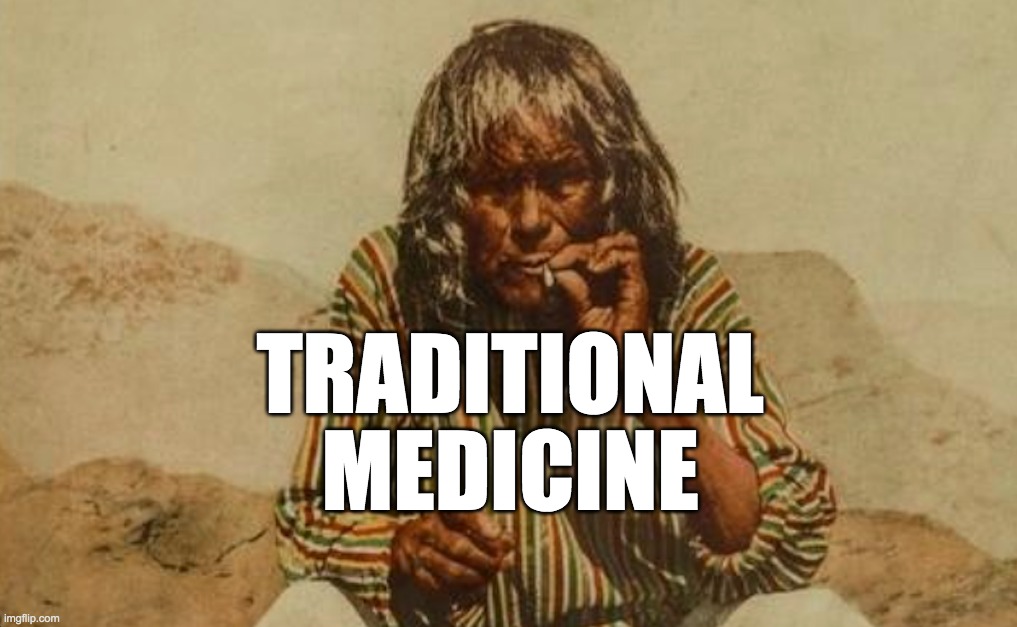




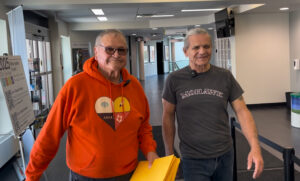



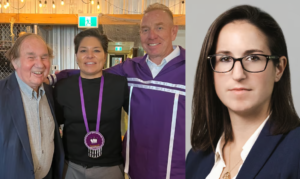
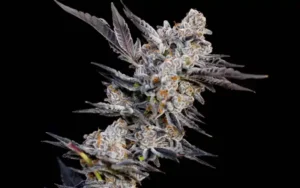
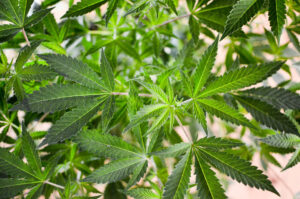


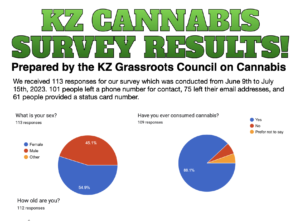
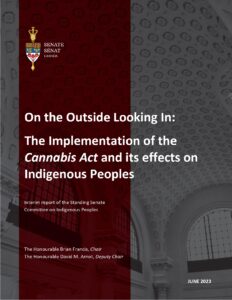
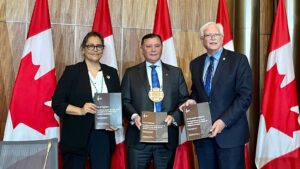
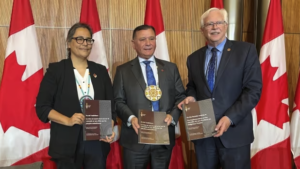
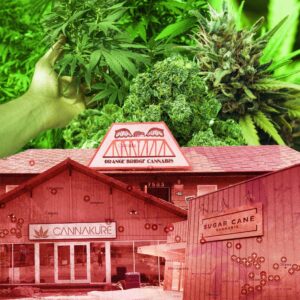
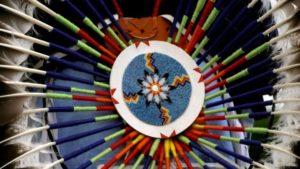


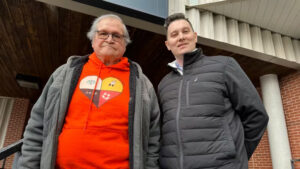

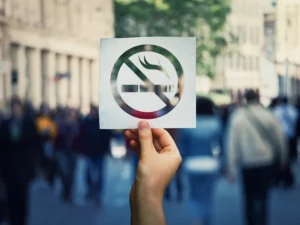

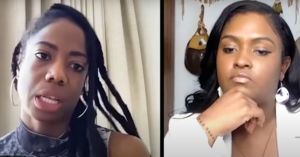

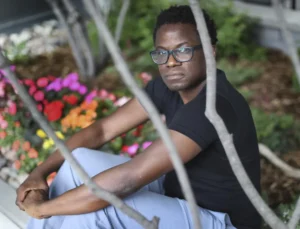
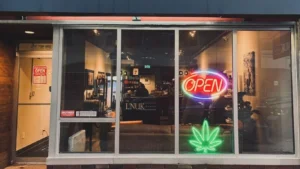

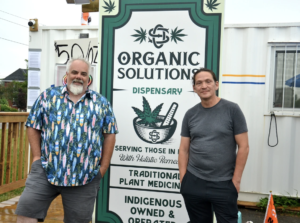
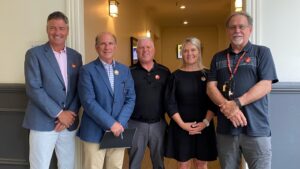
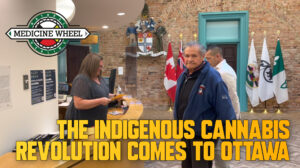
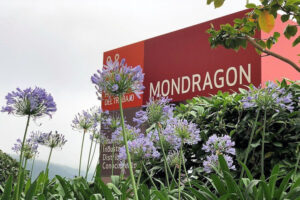
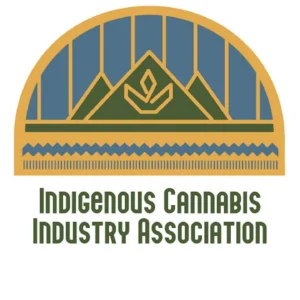
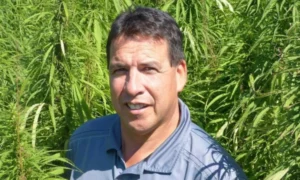
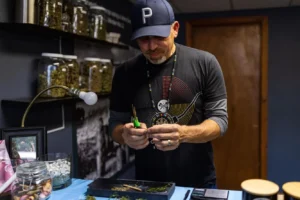
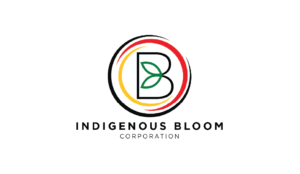
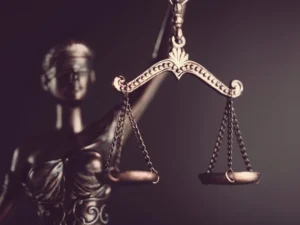

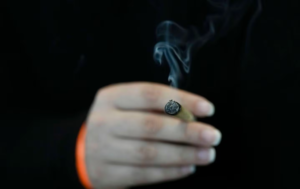

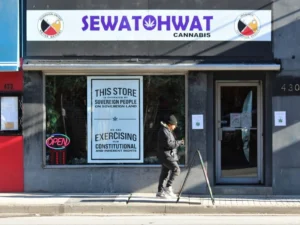
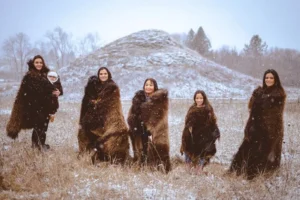
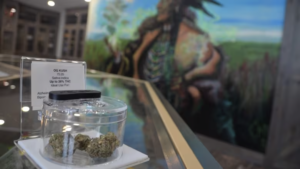

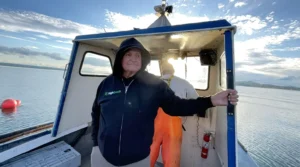
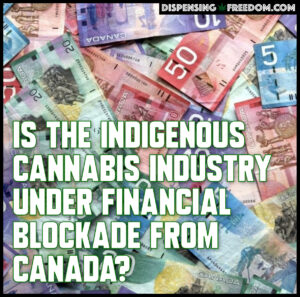
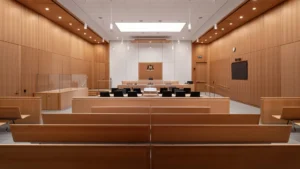

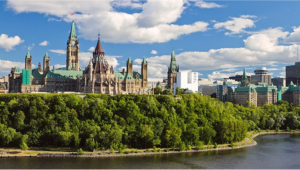
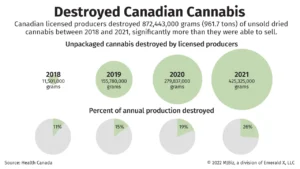

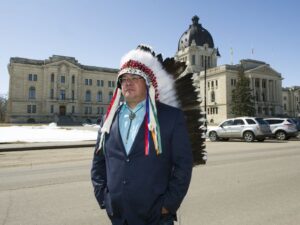

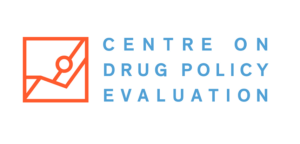
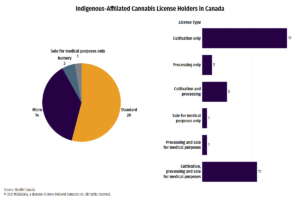
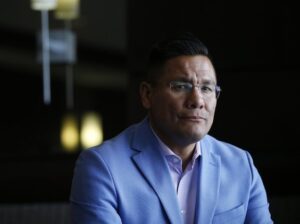


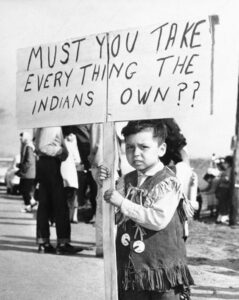
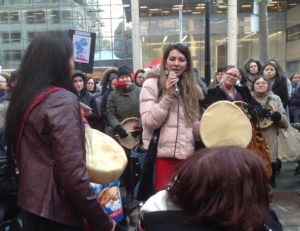
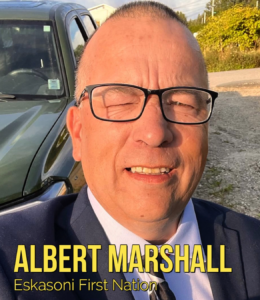
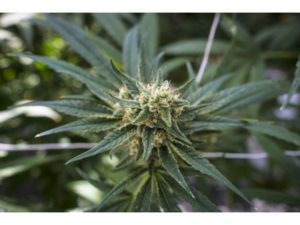
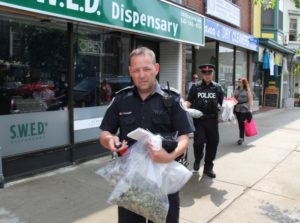
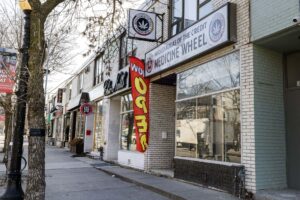


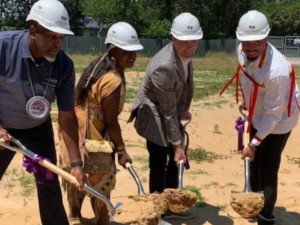


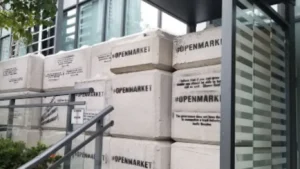



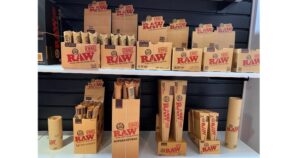
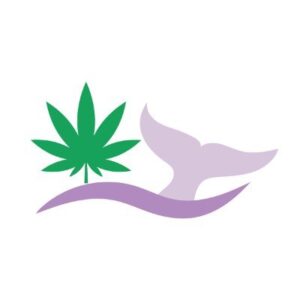

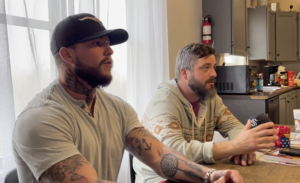
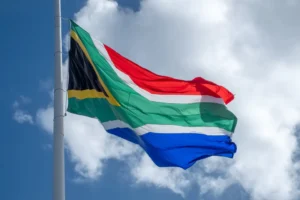


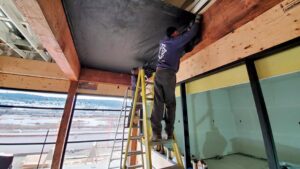

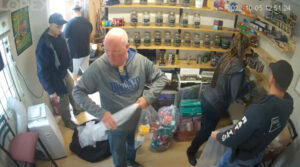

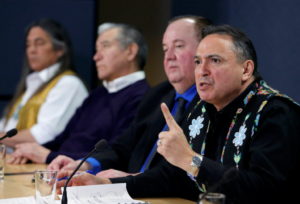


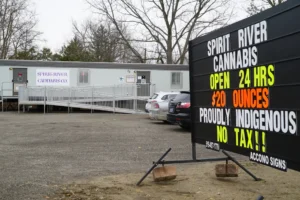
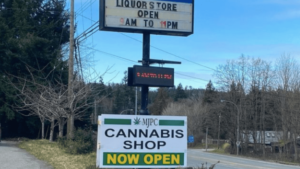
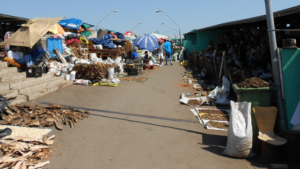
Comments are closed.